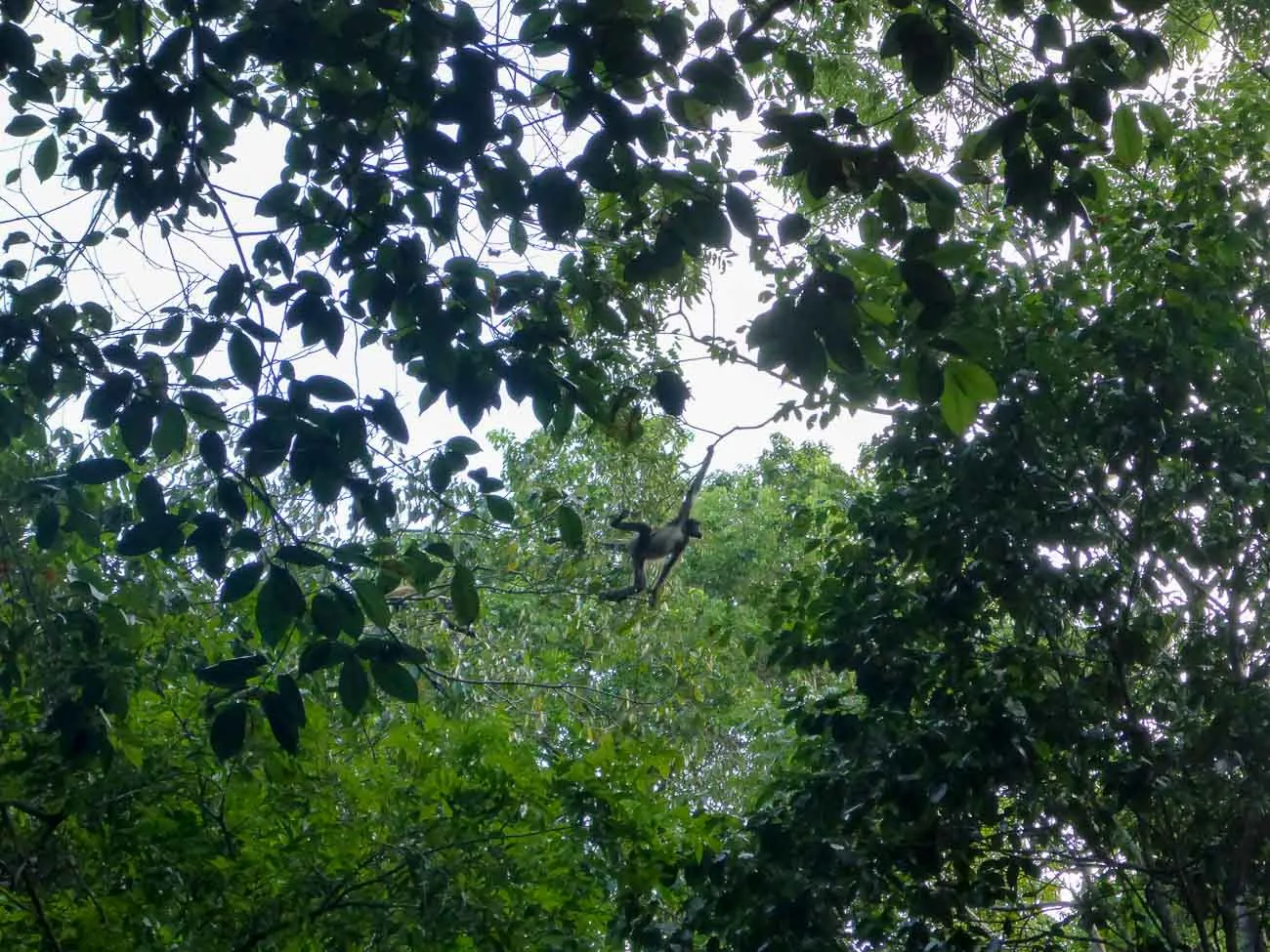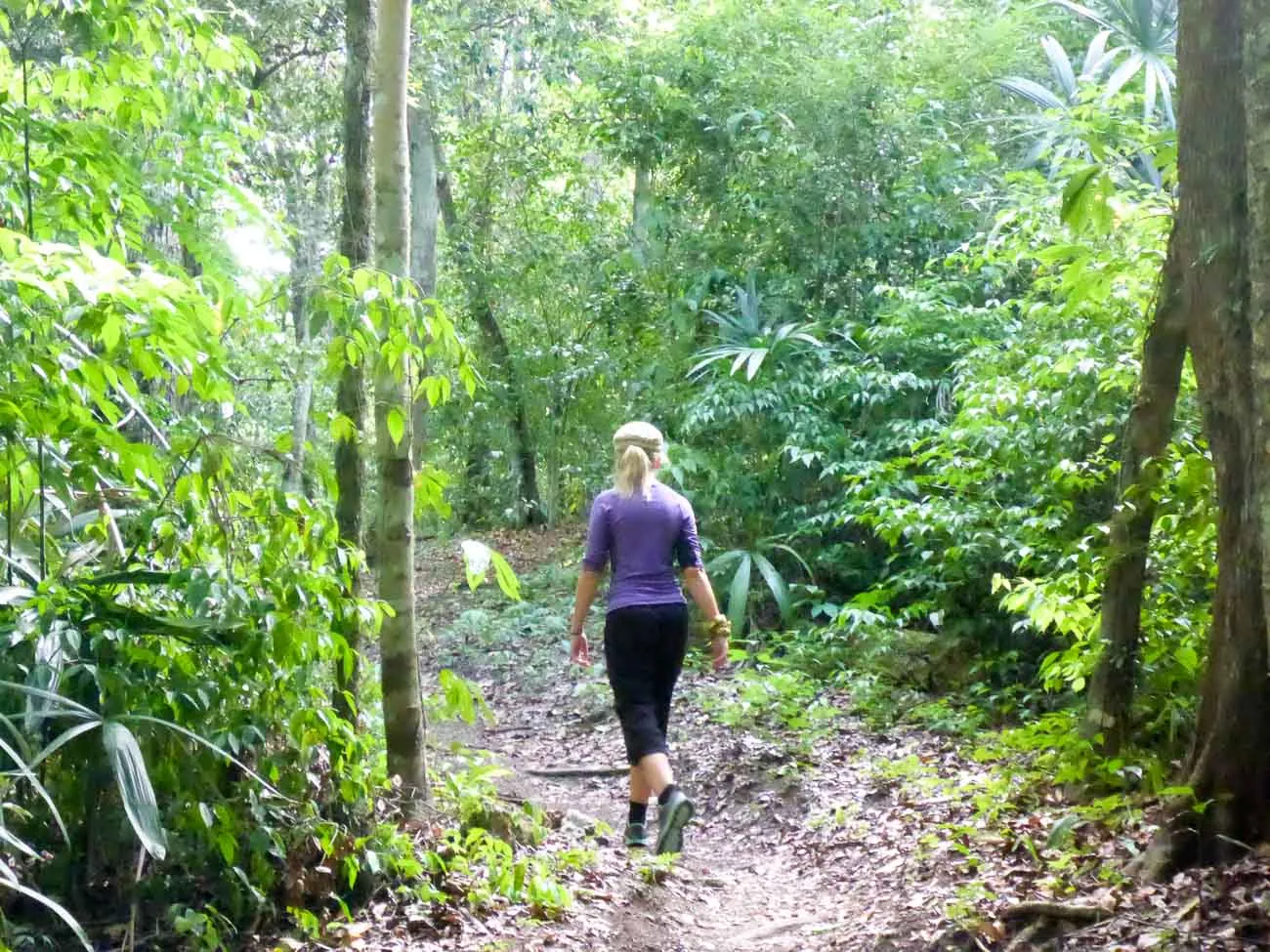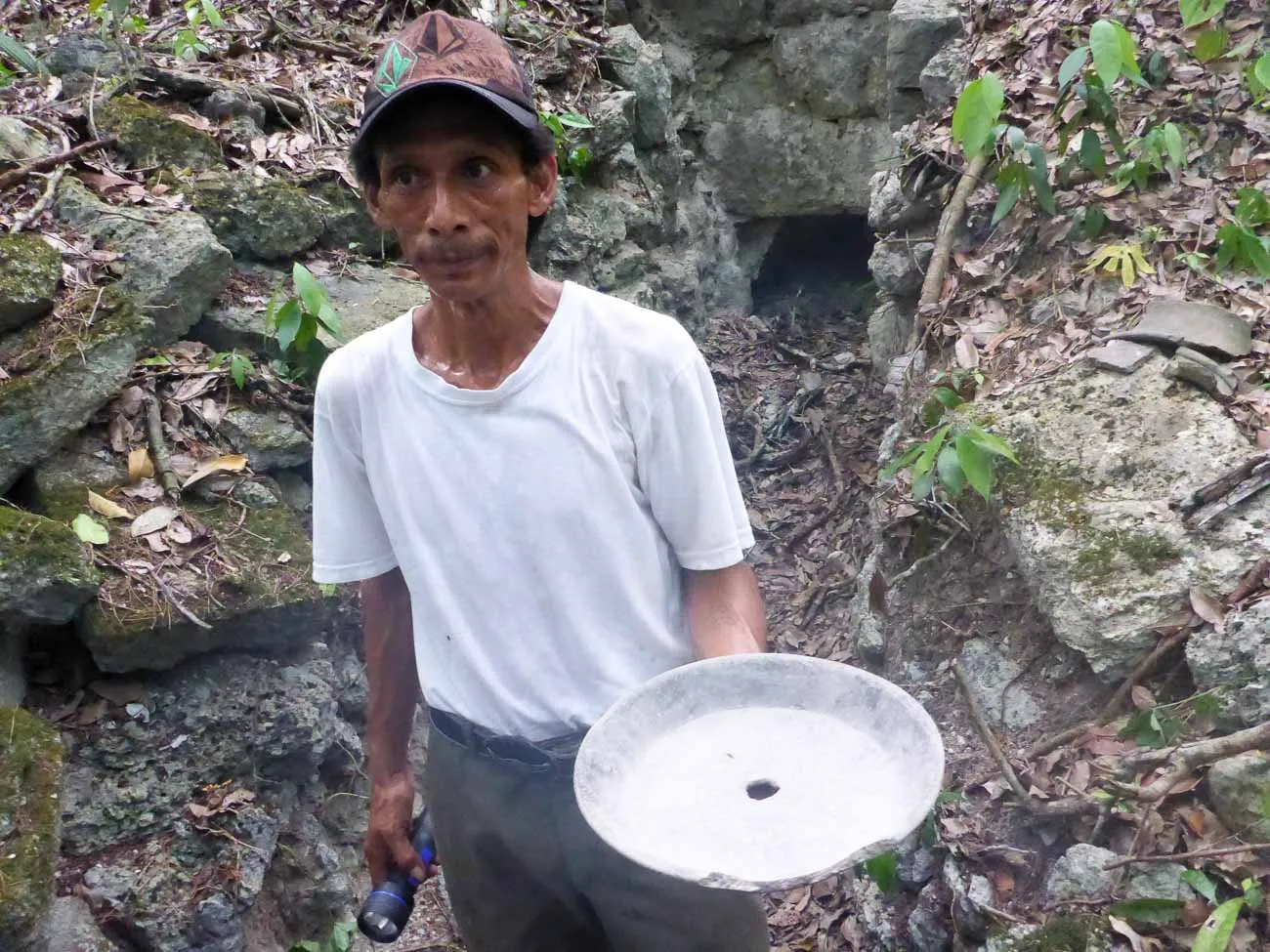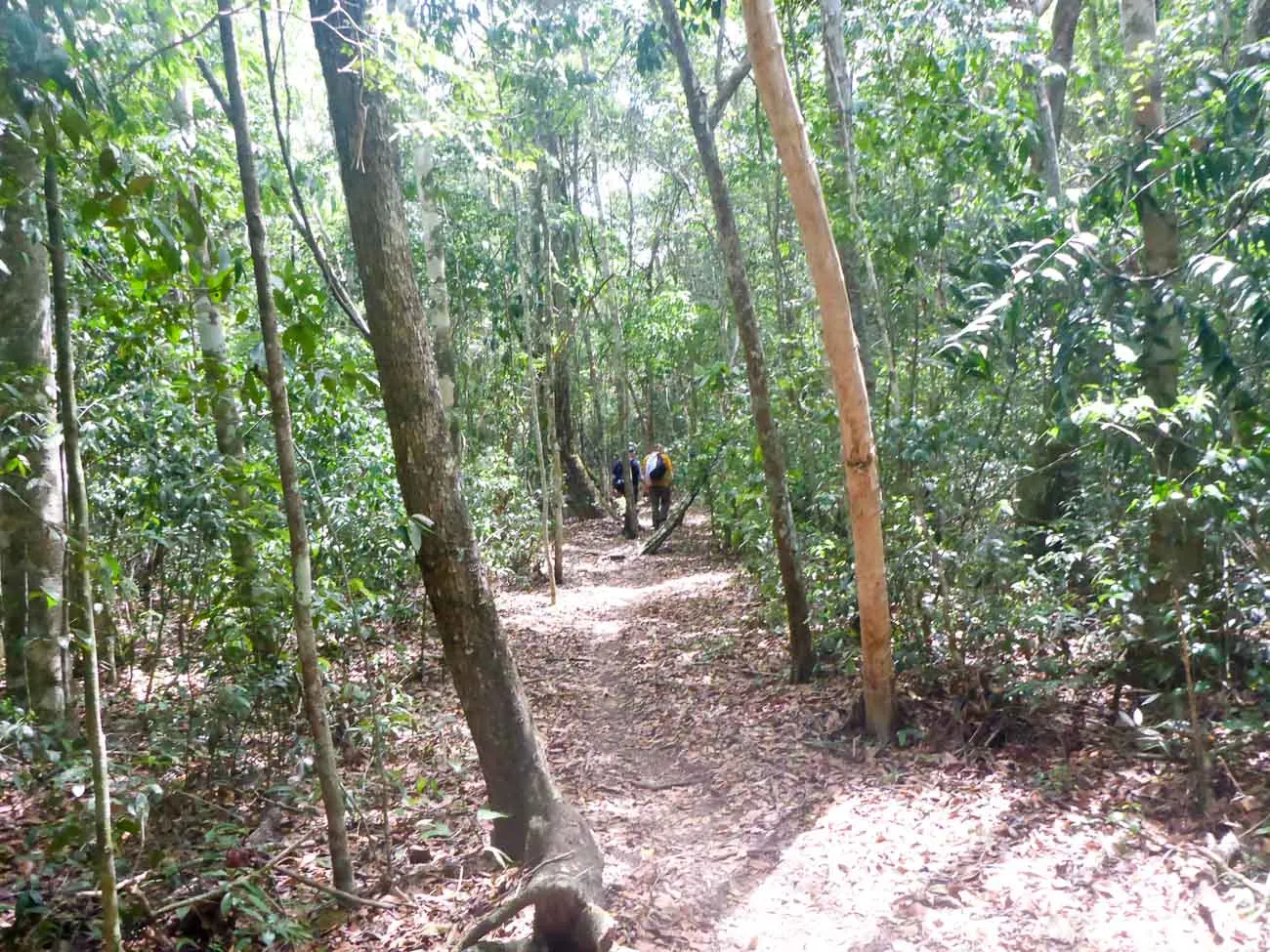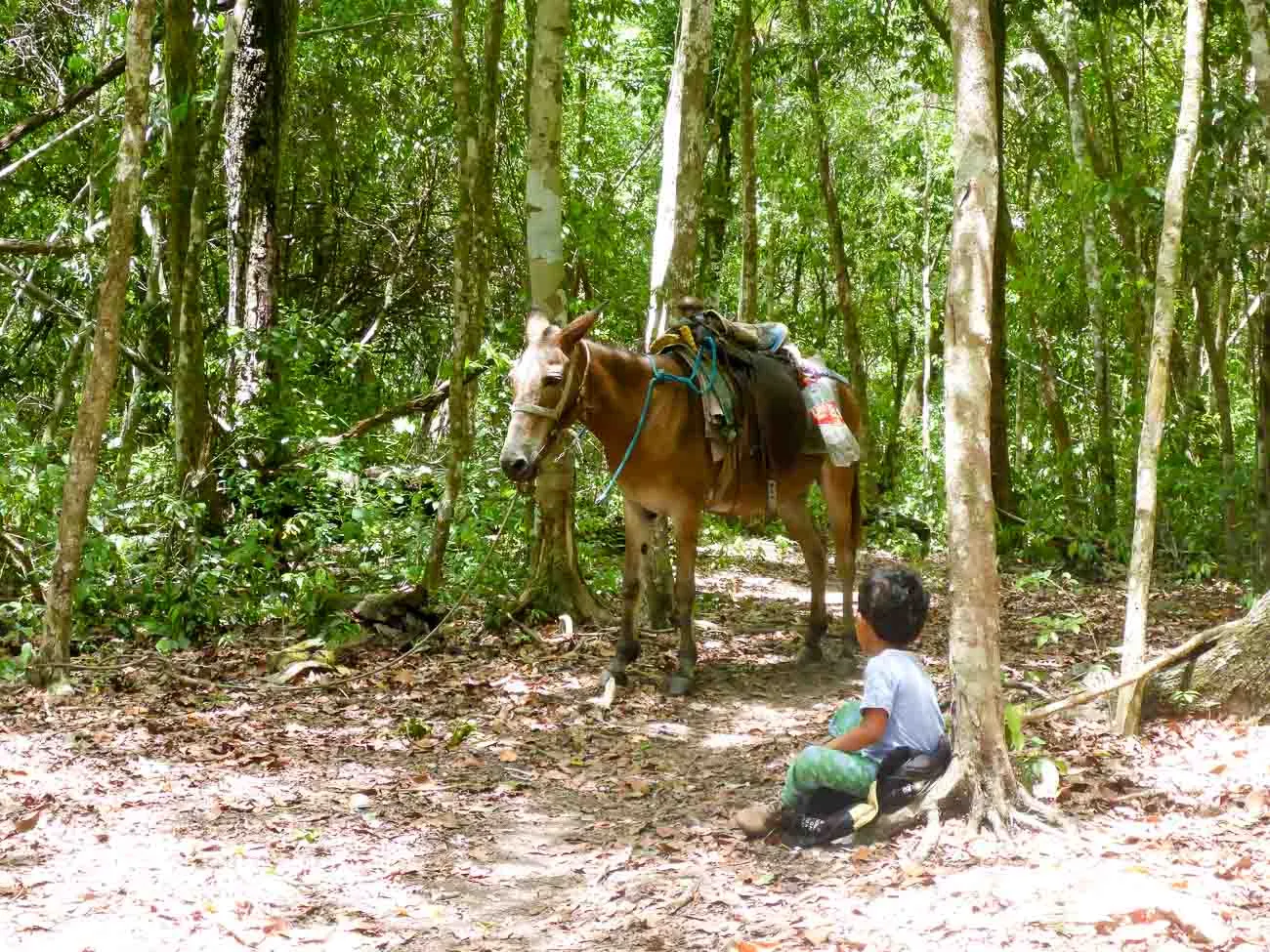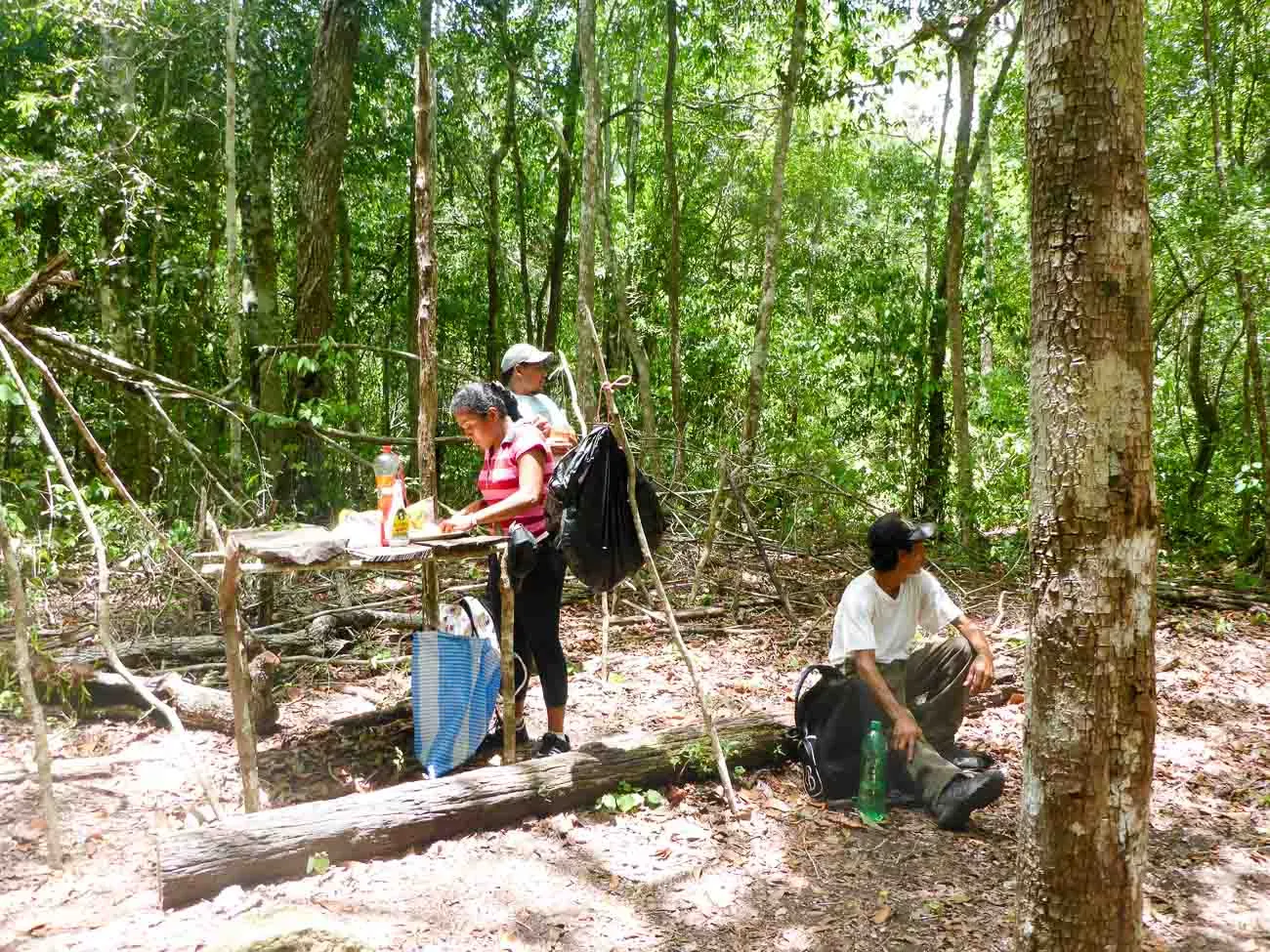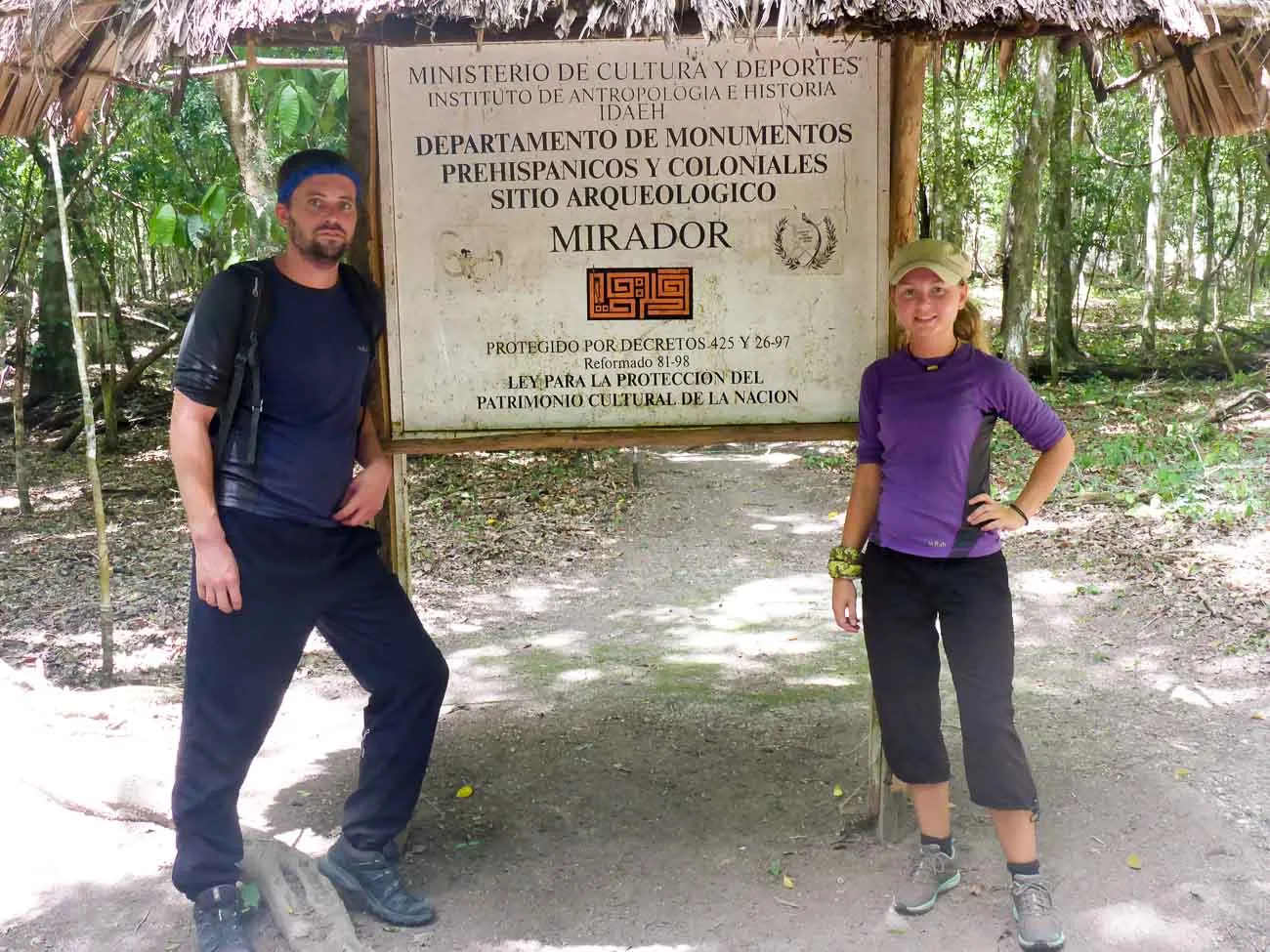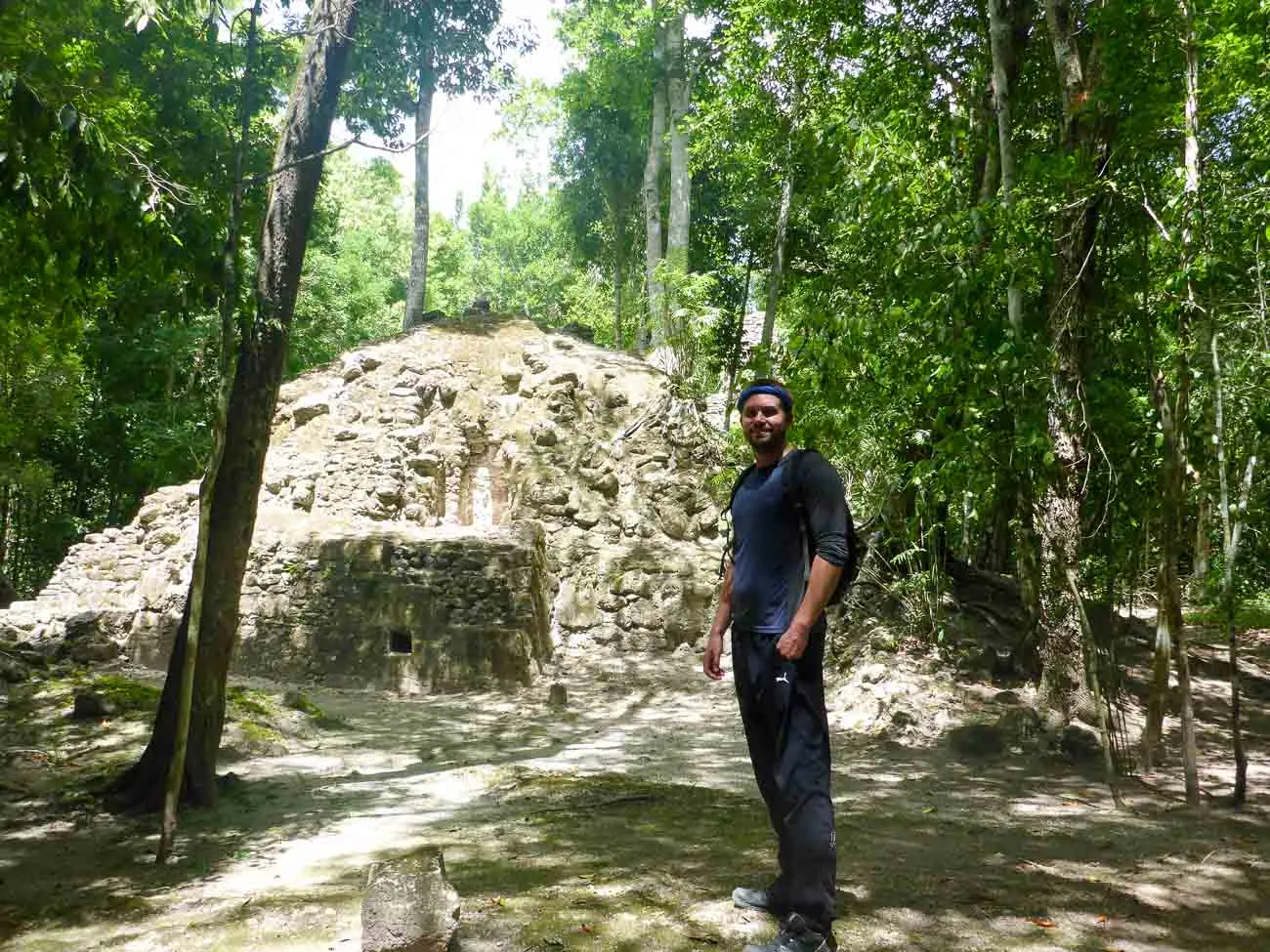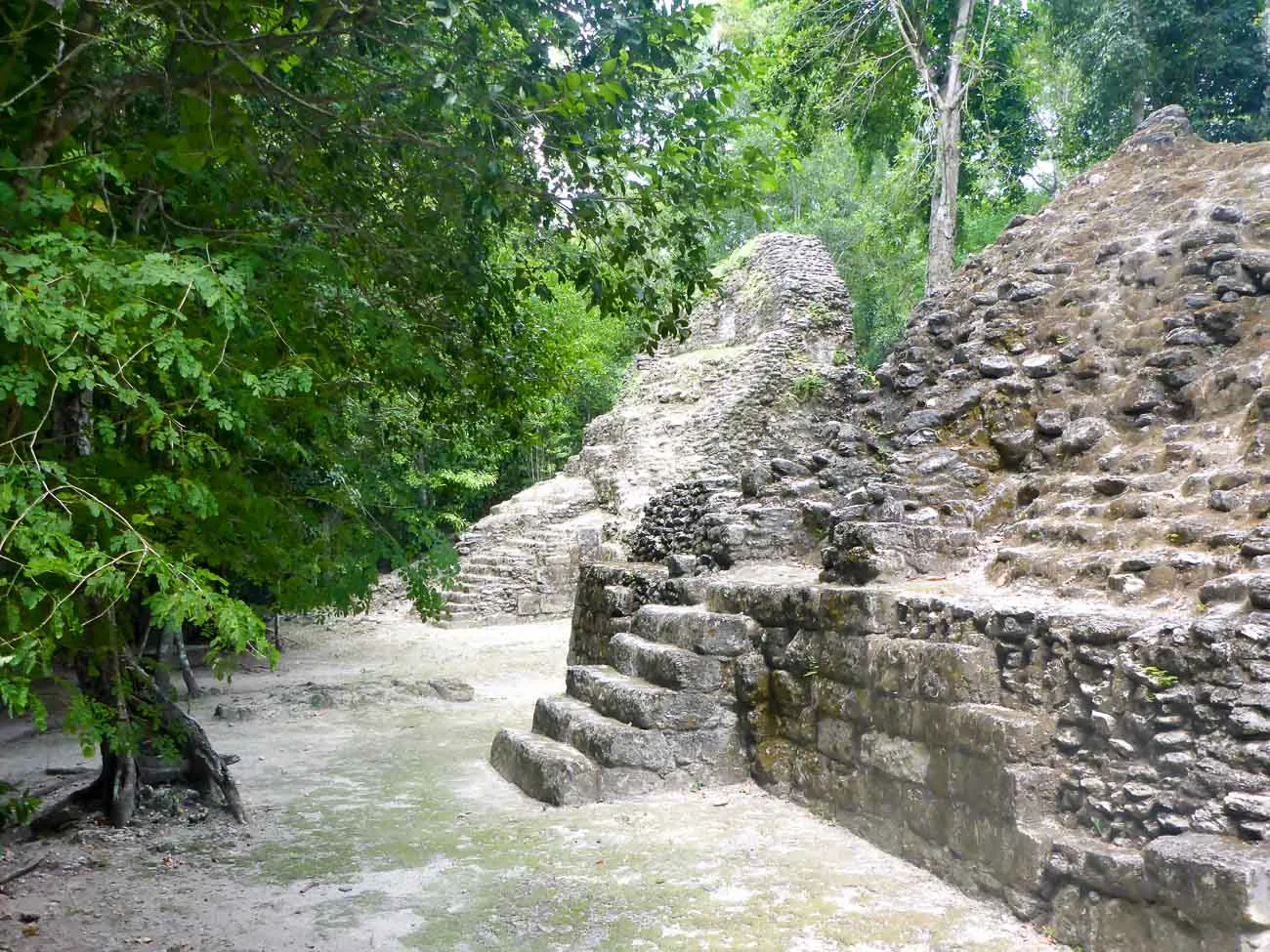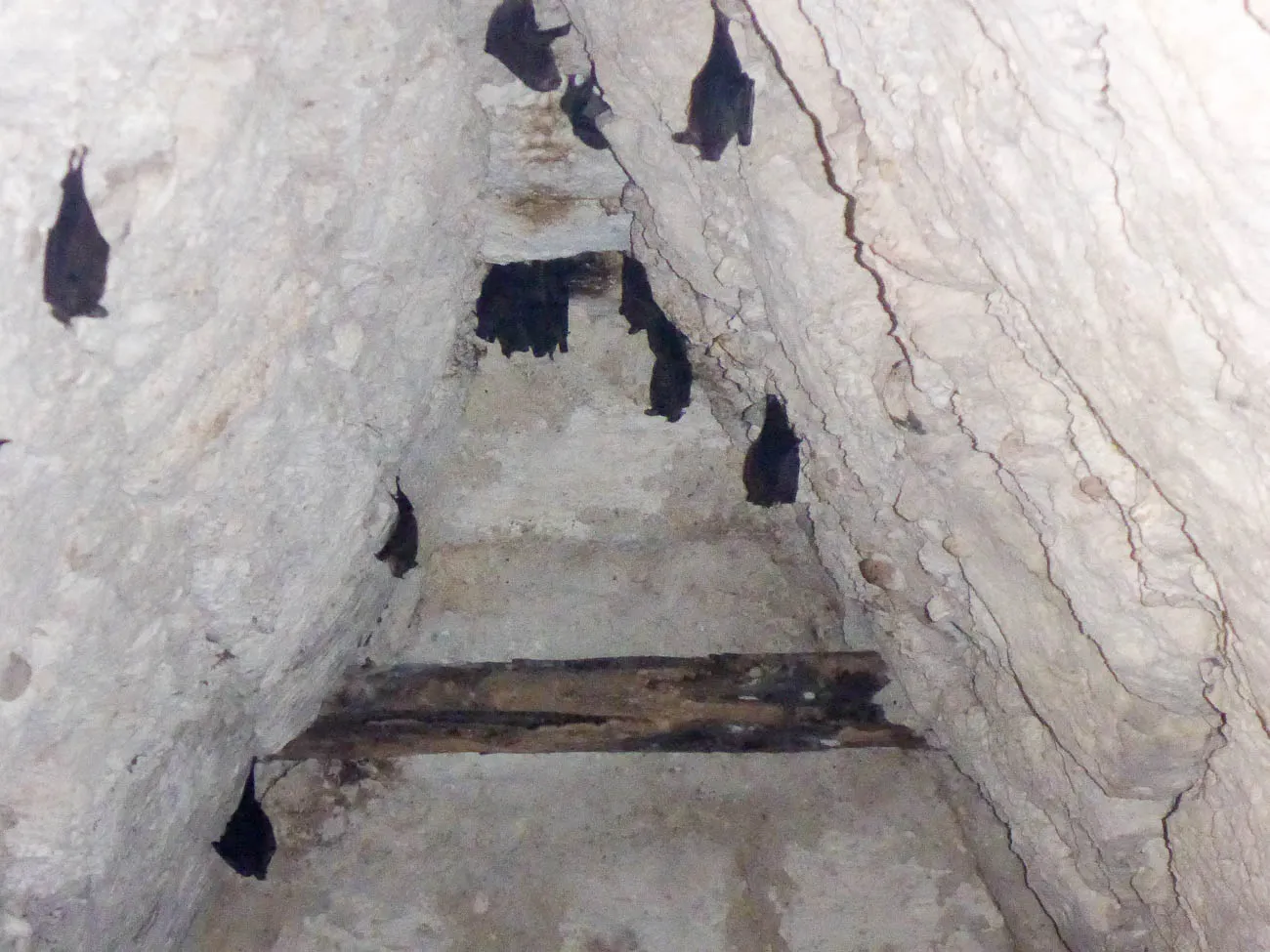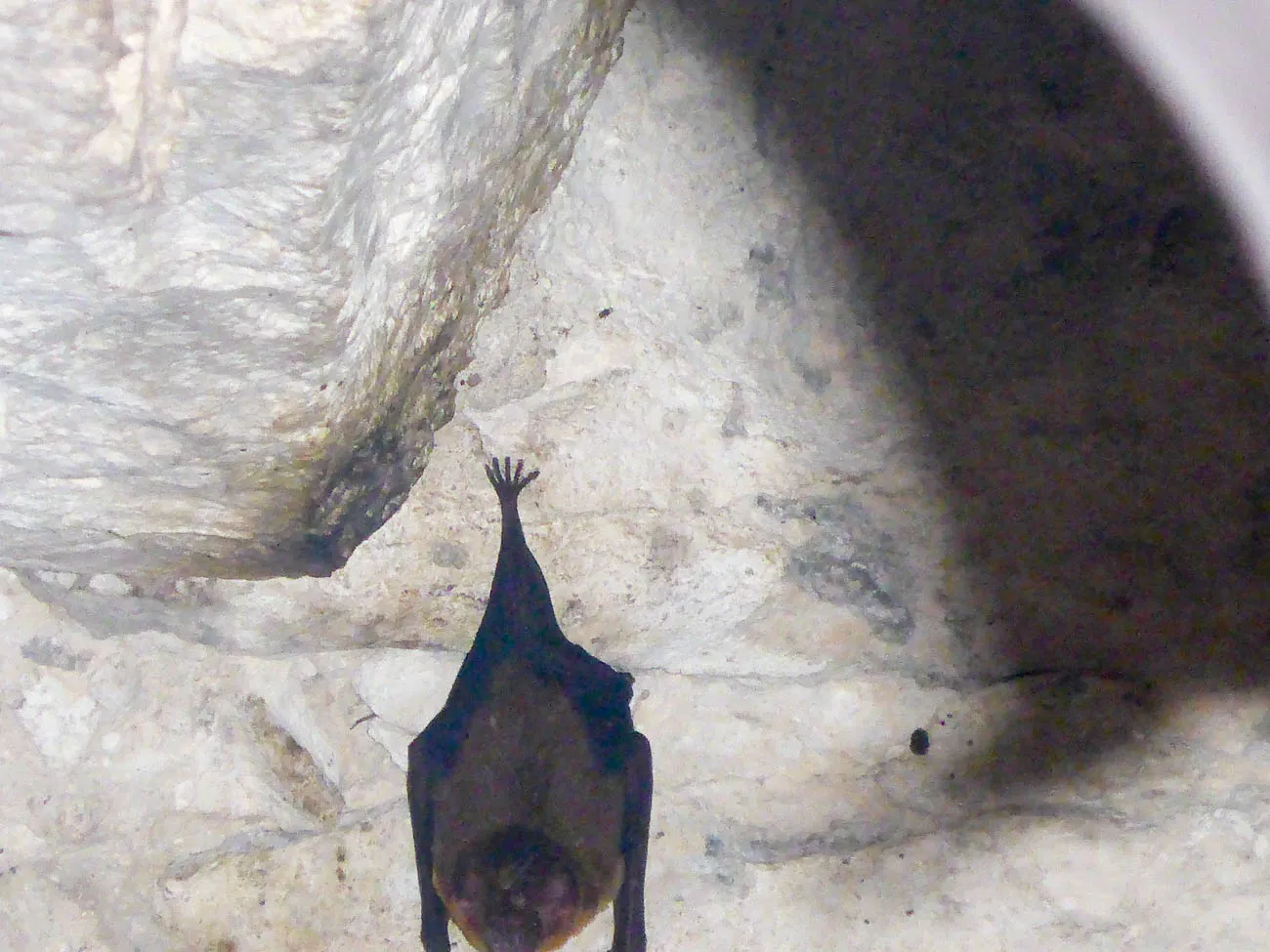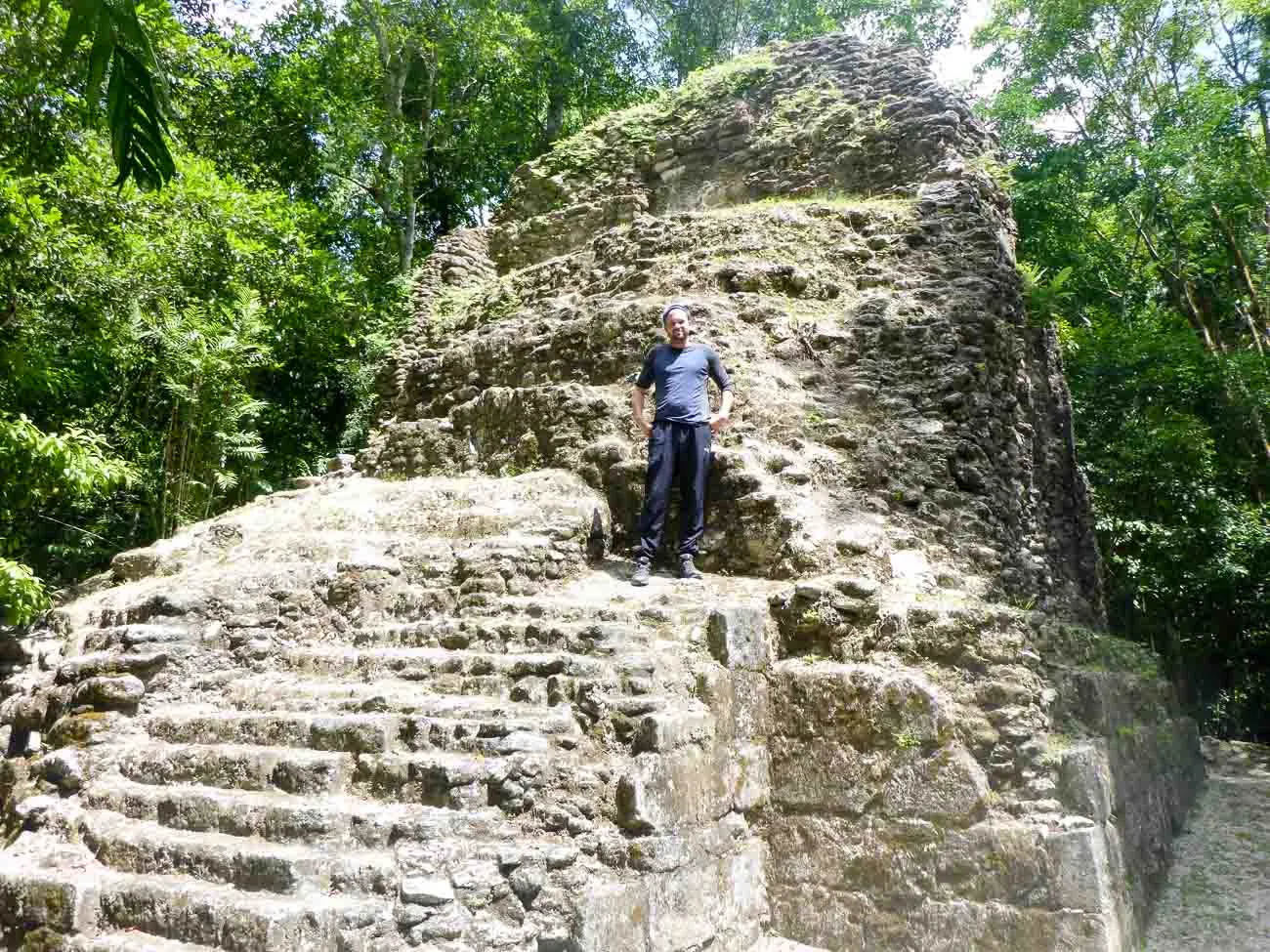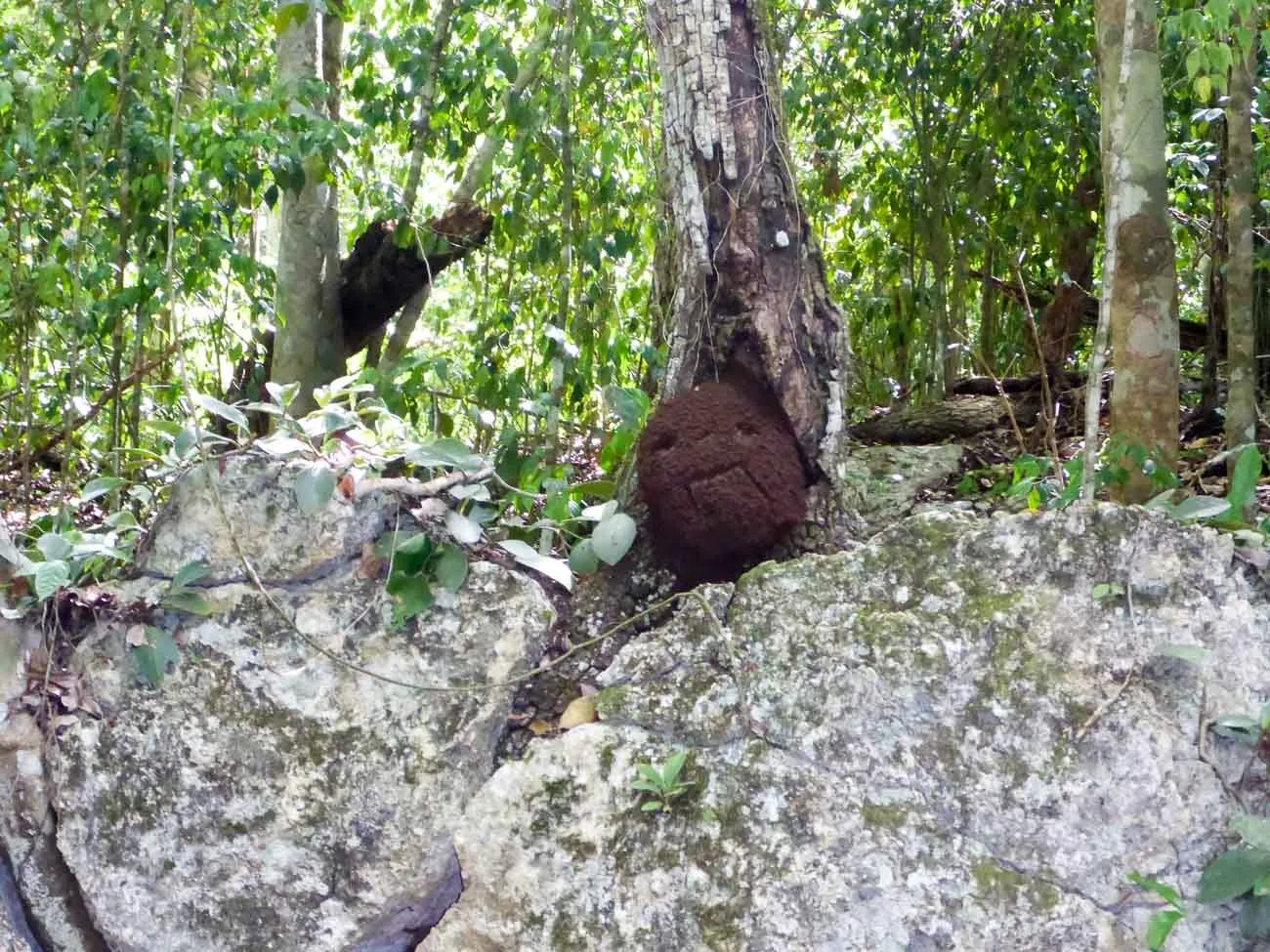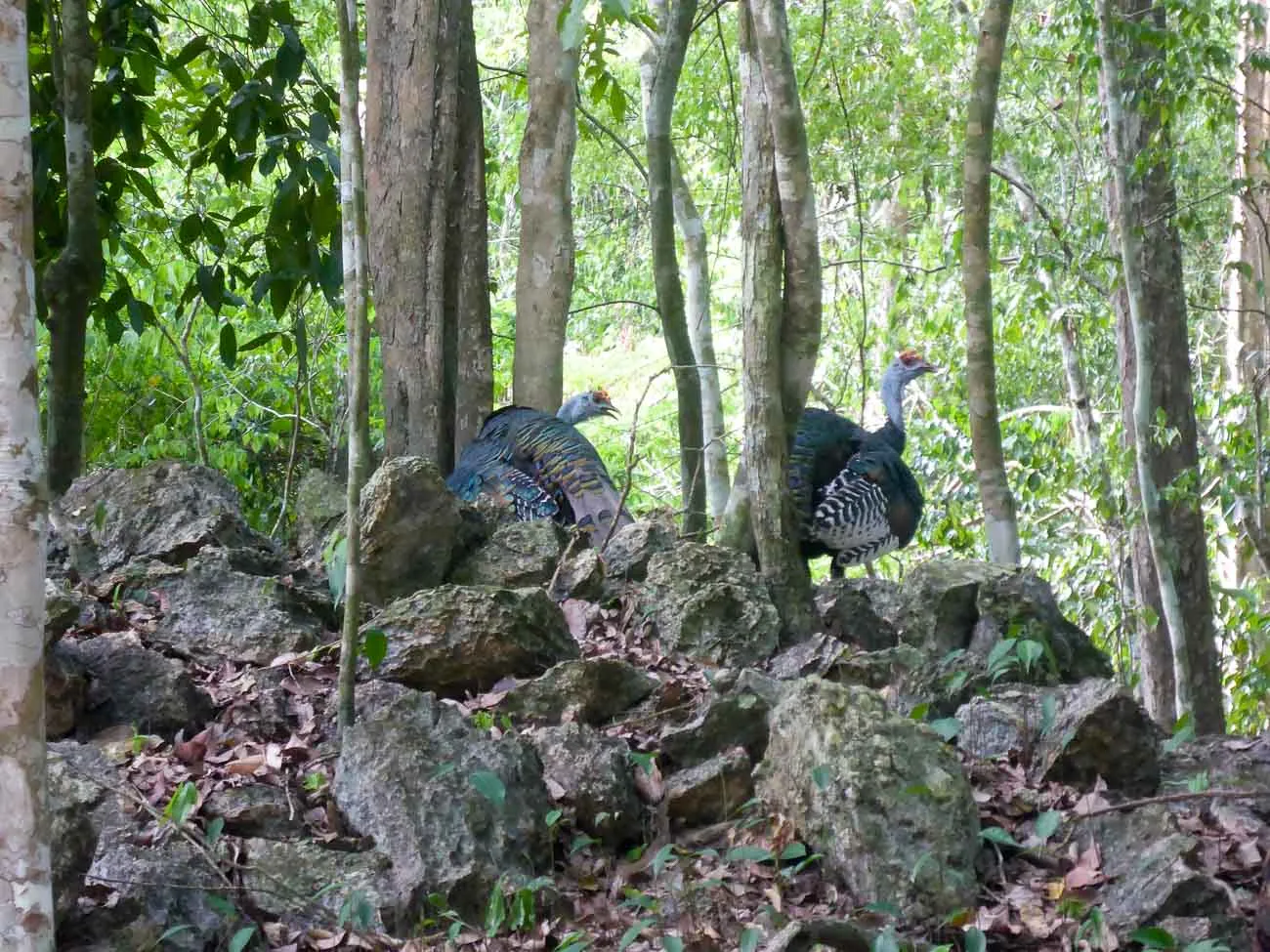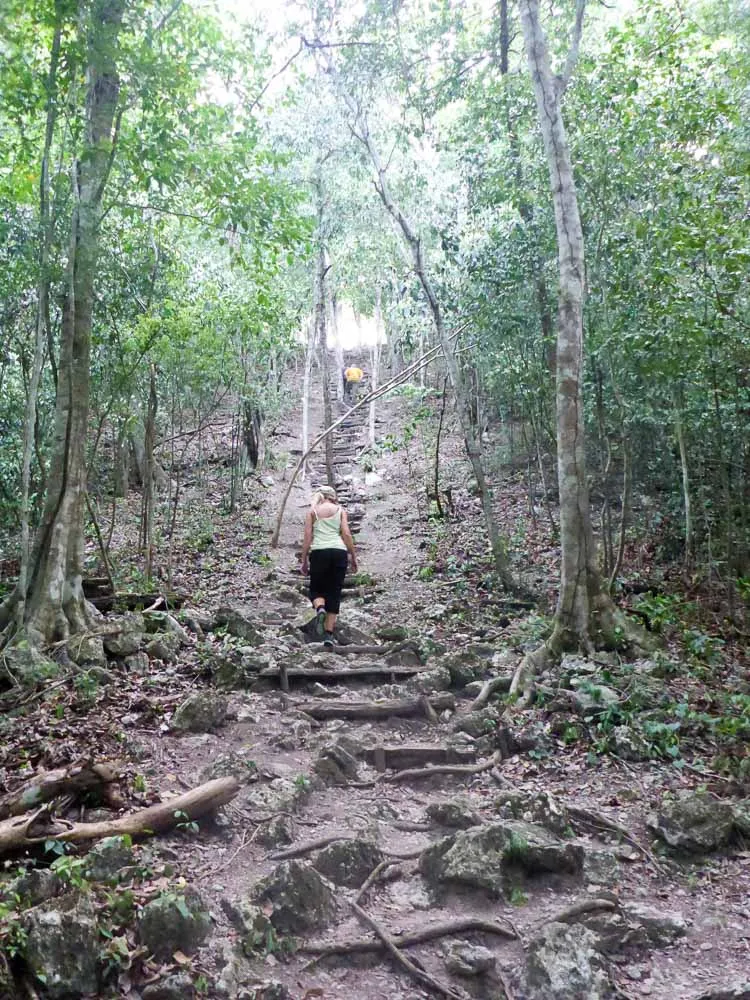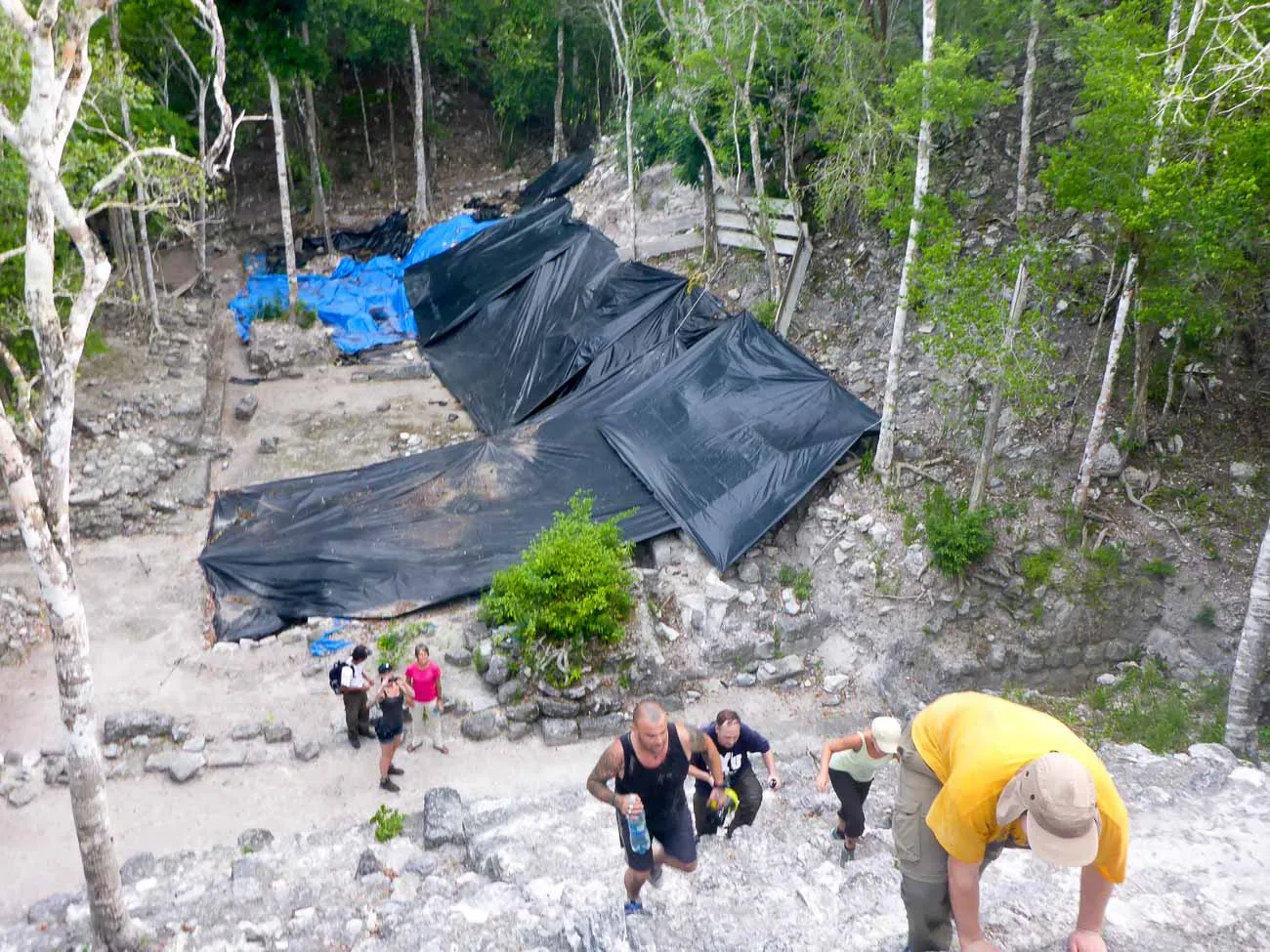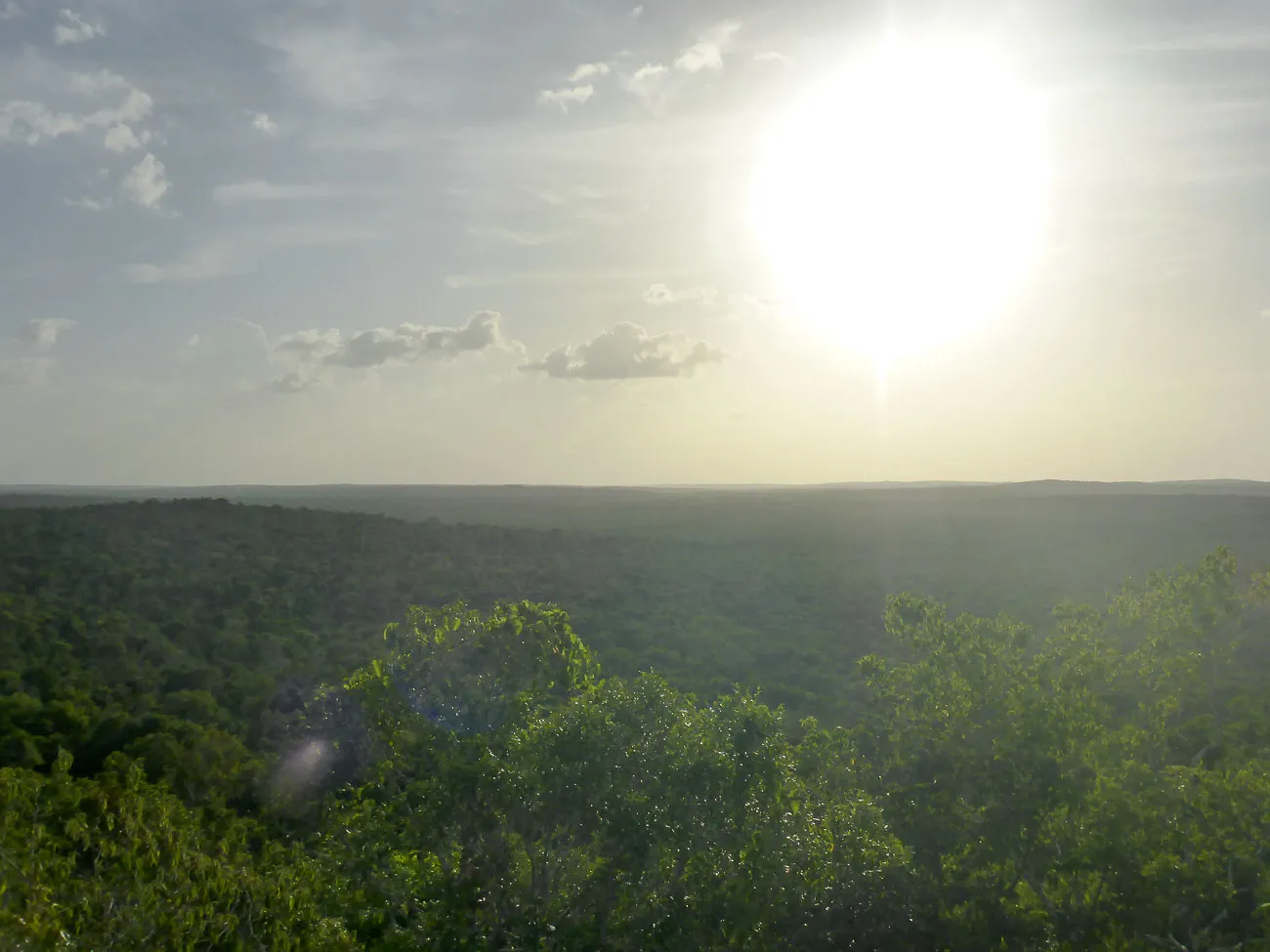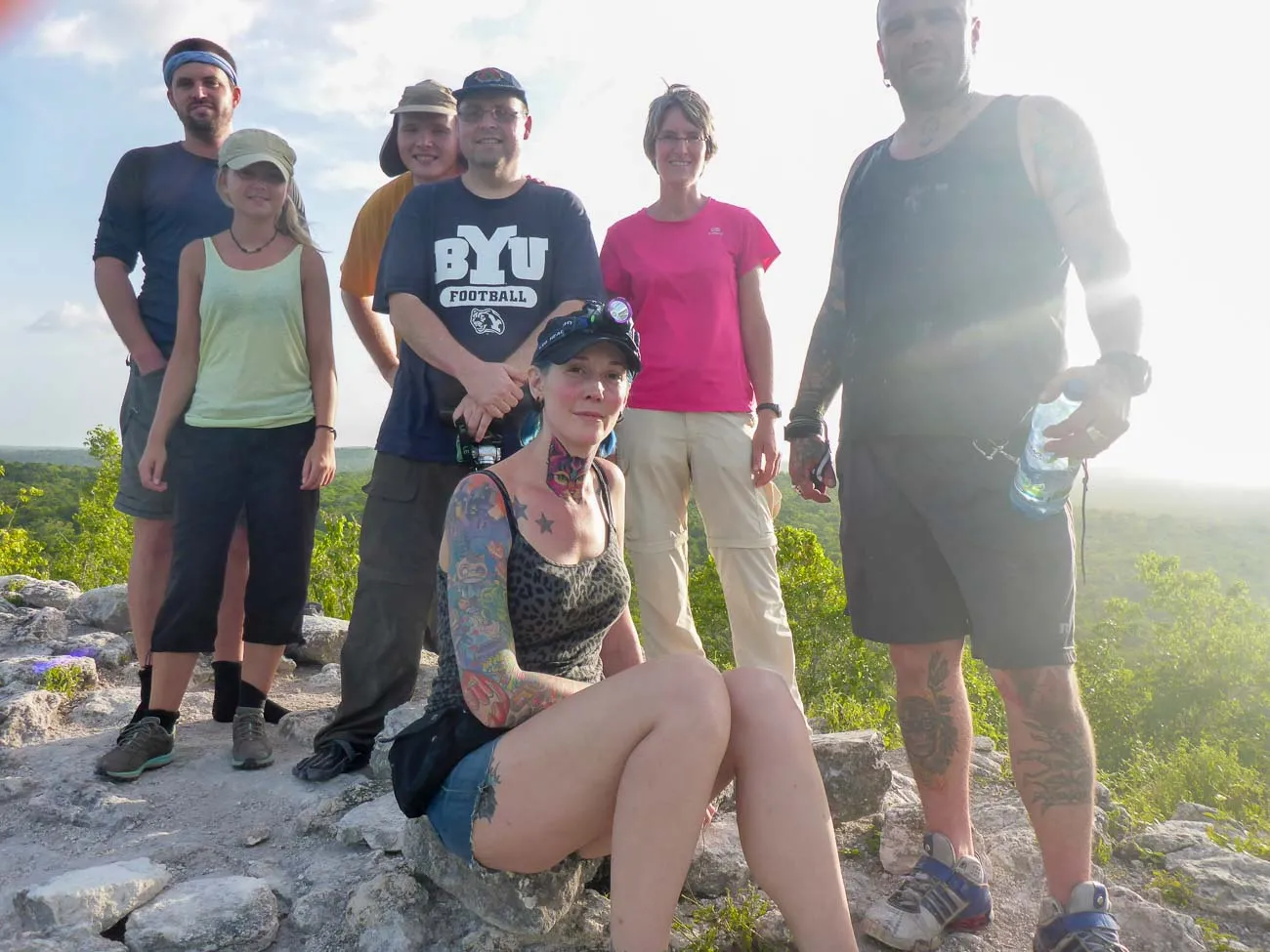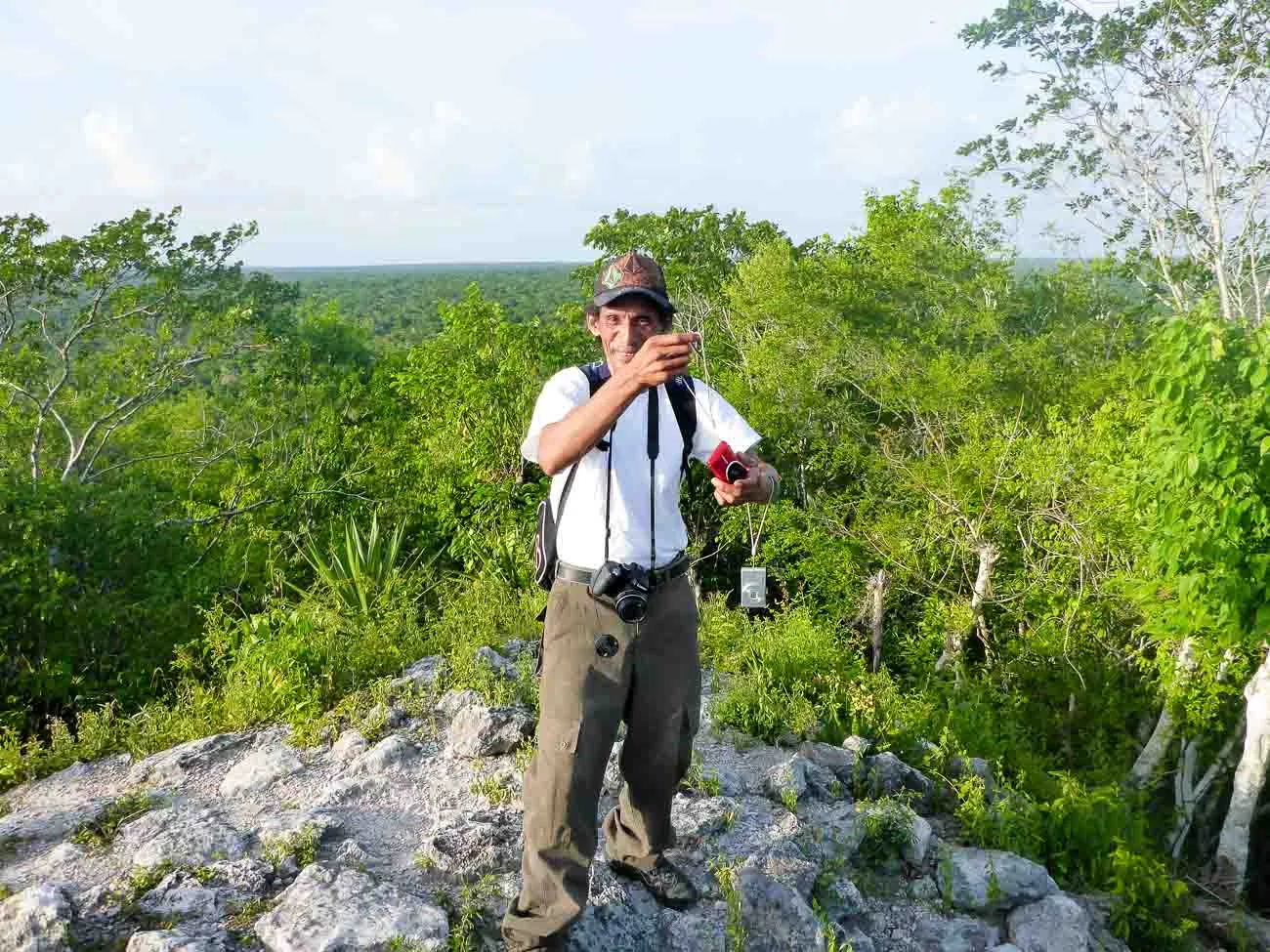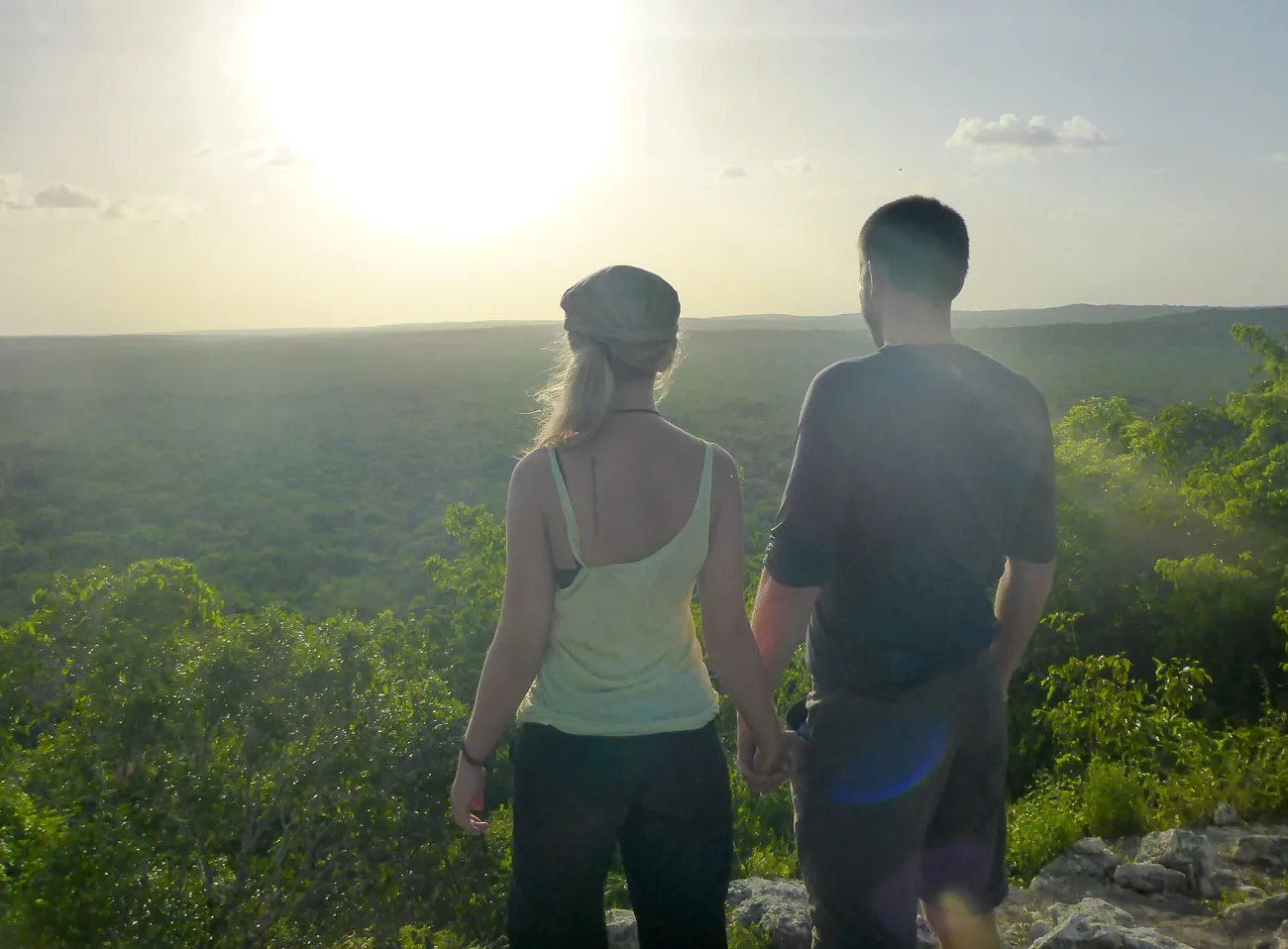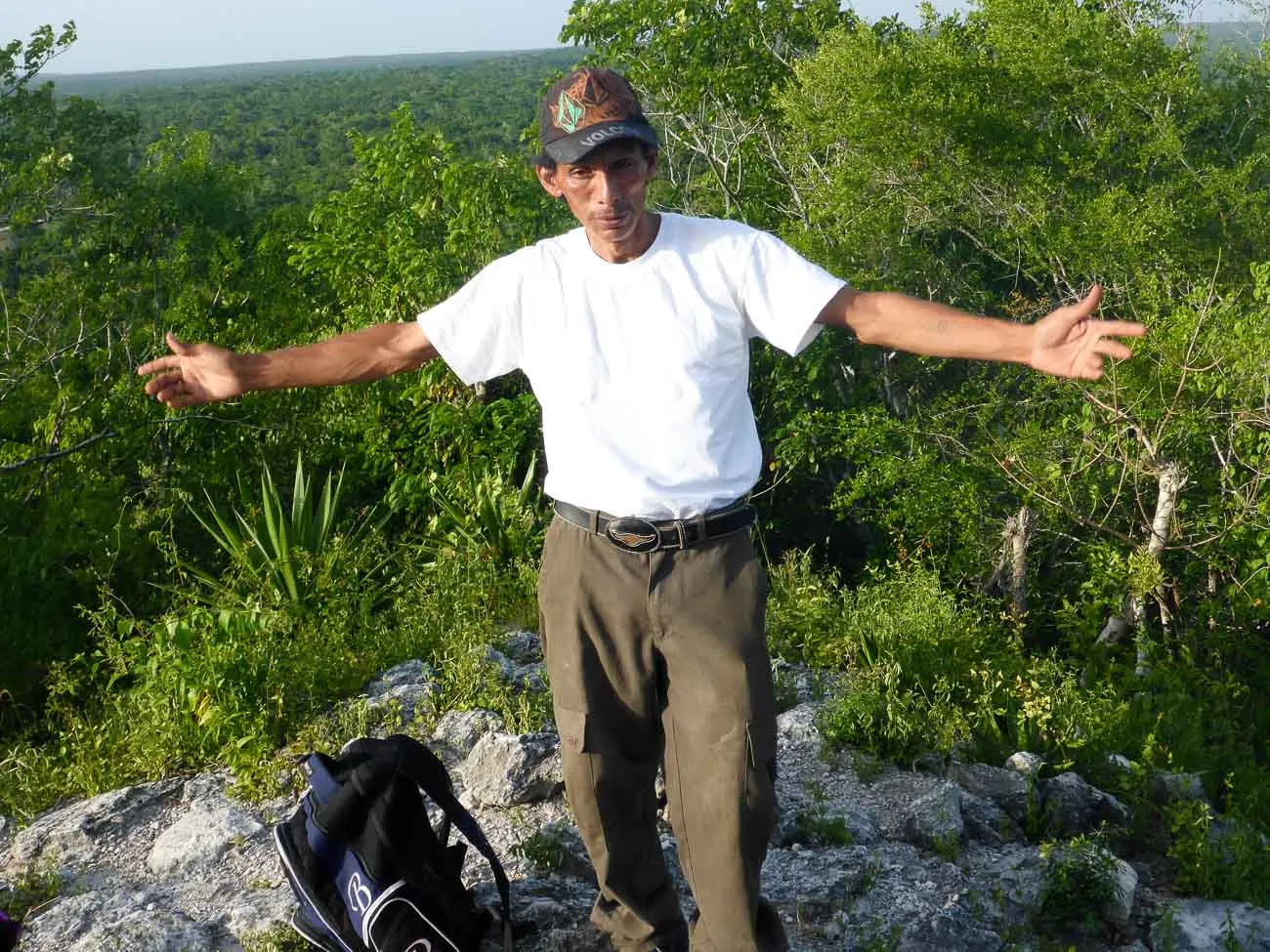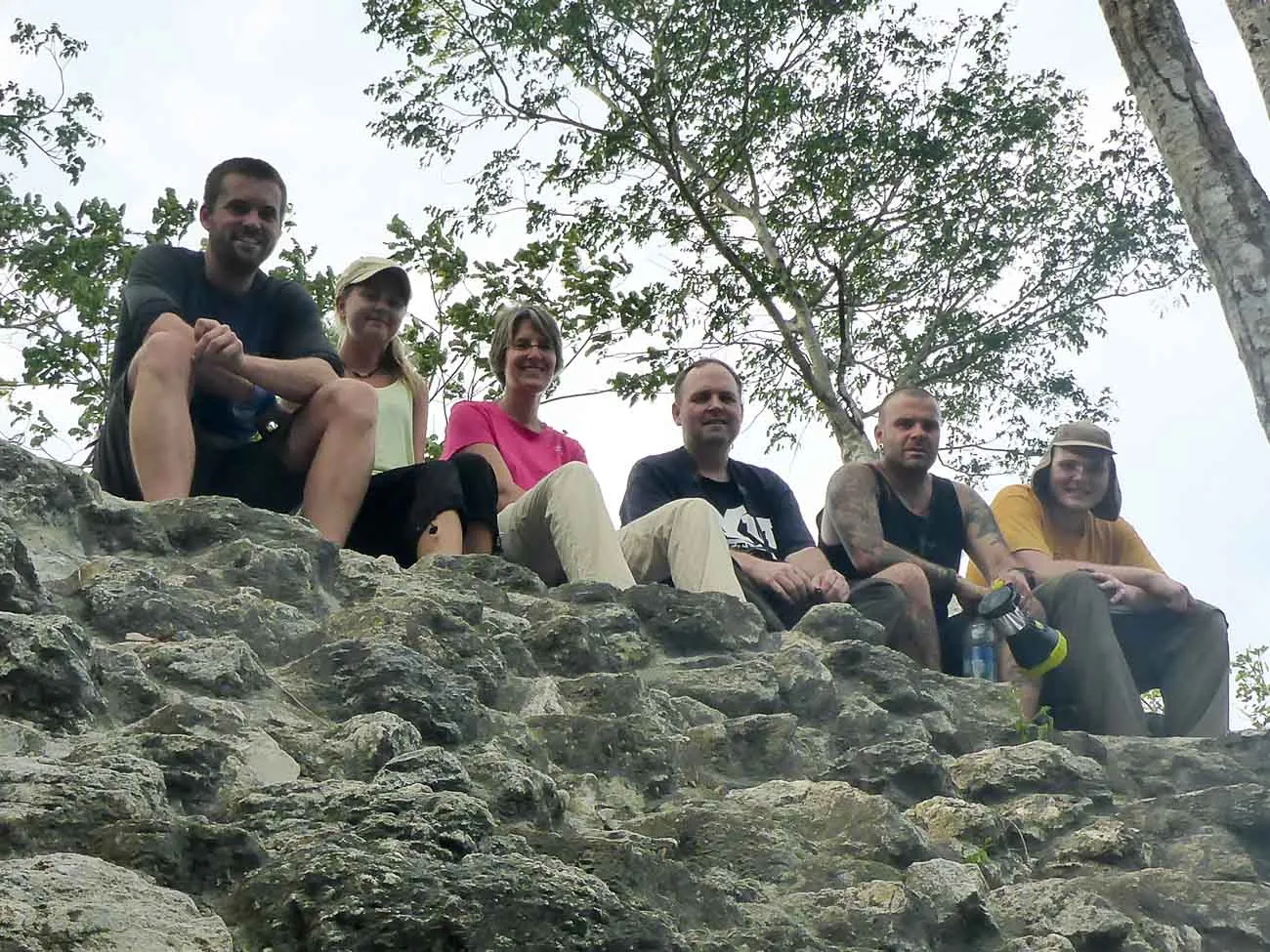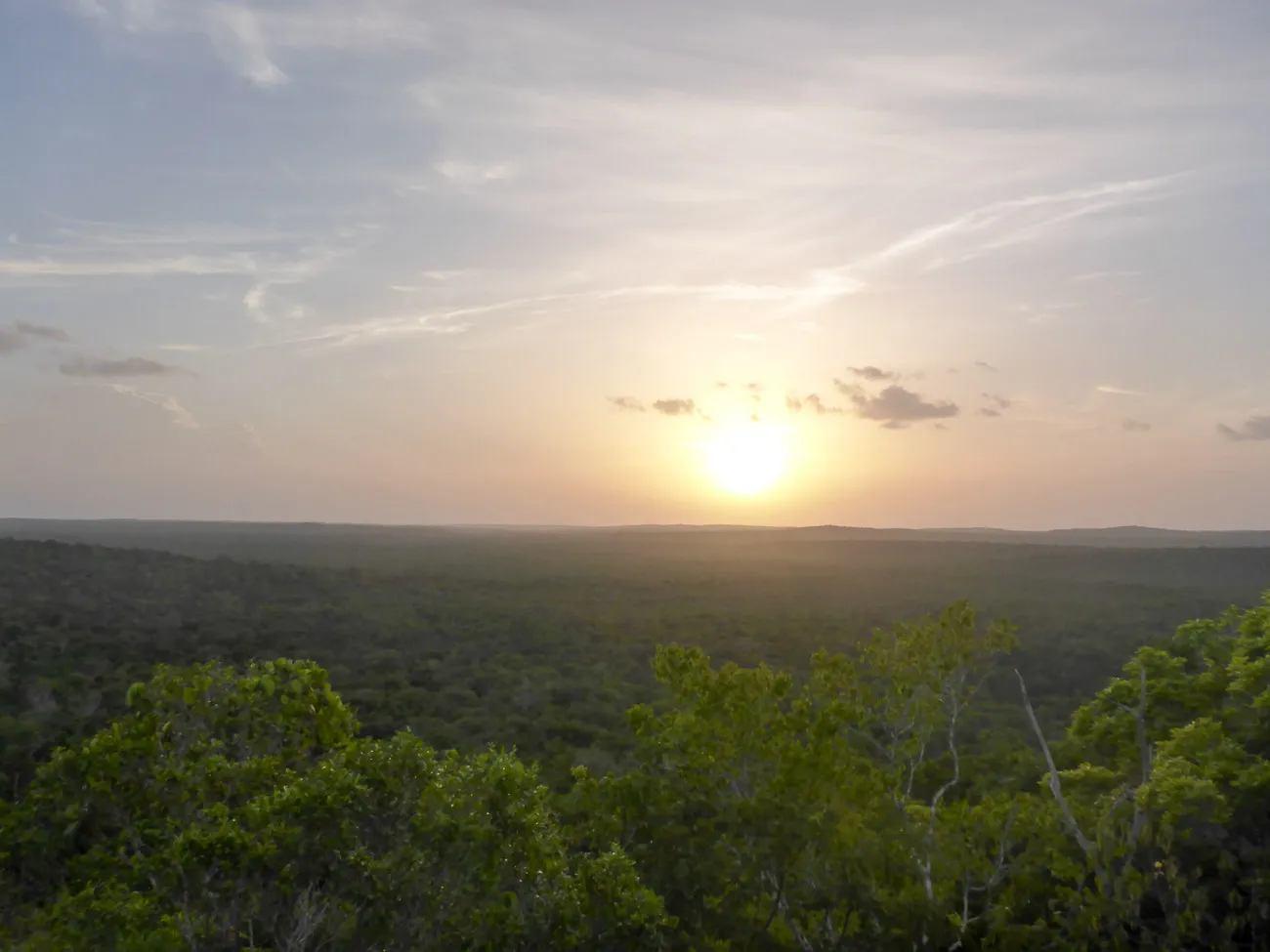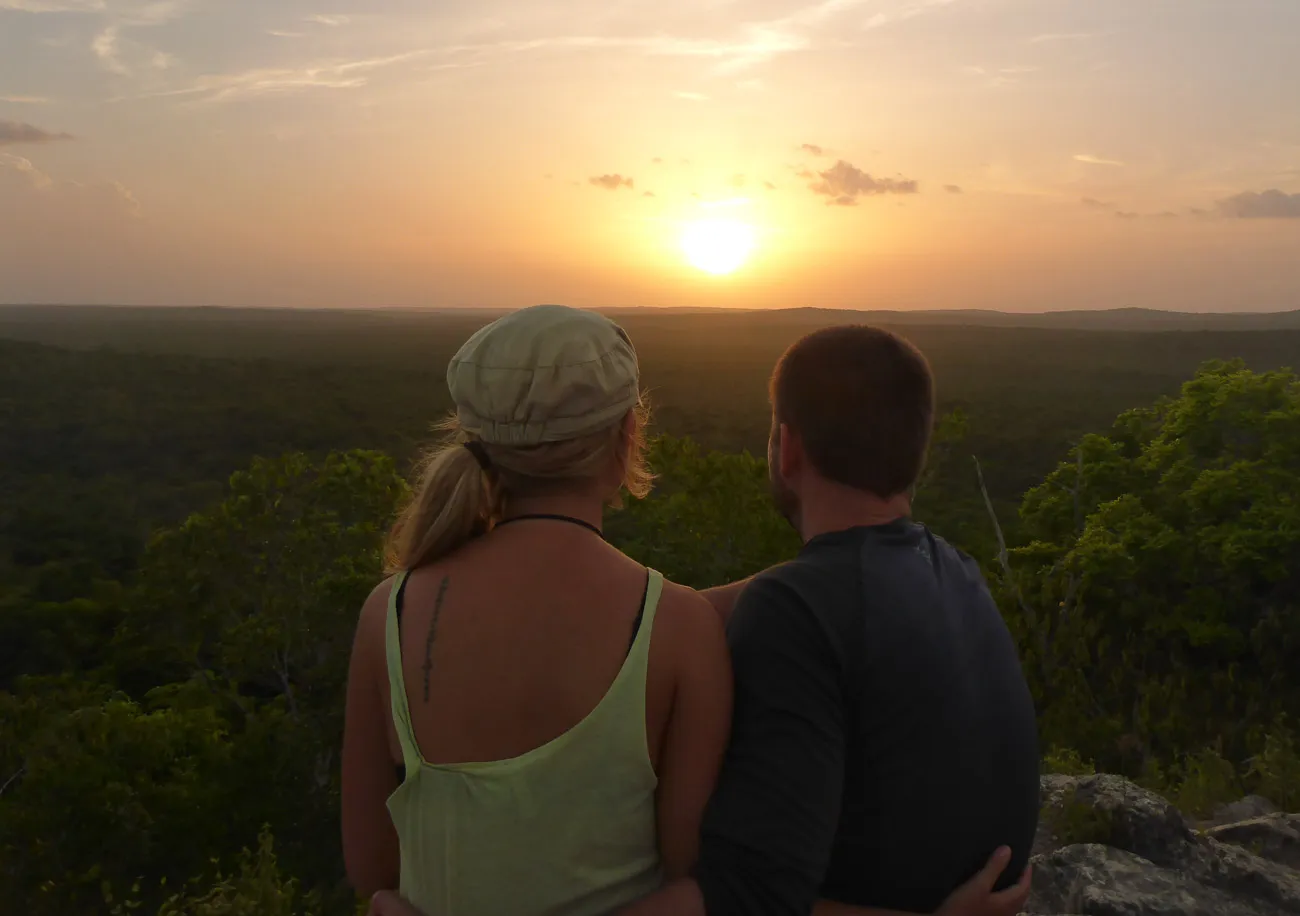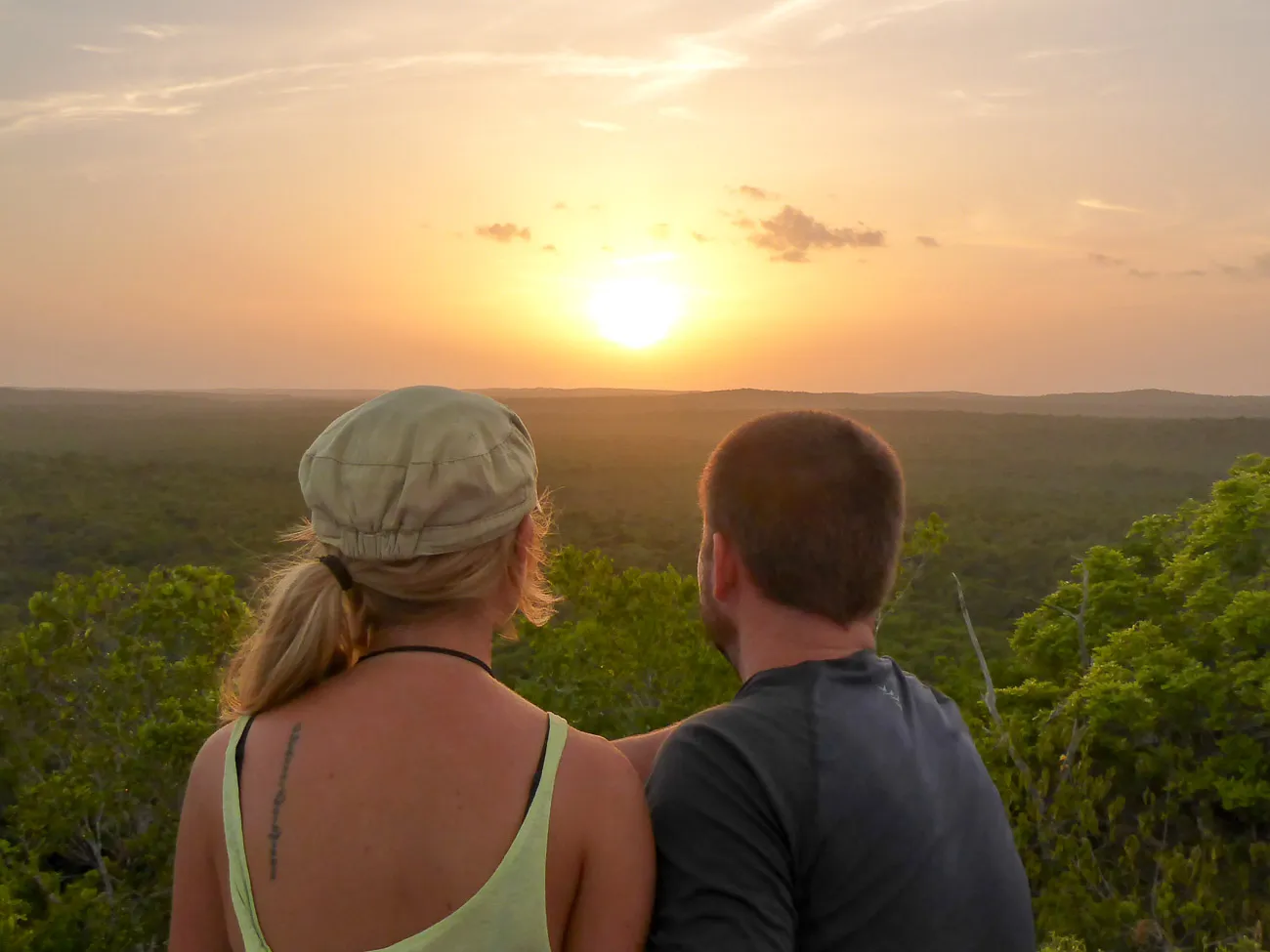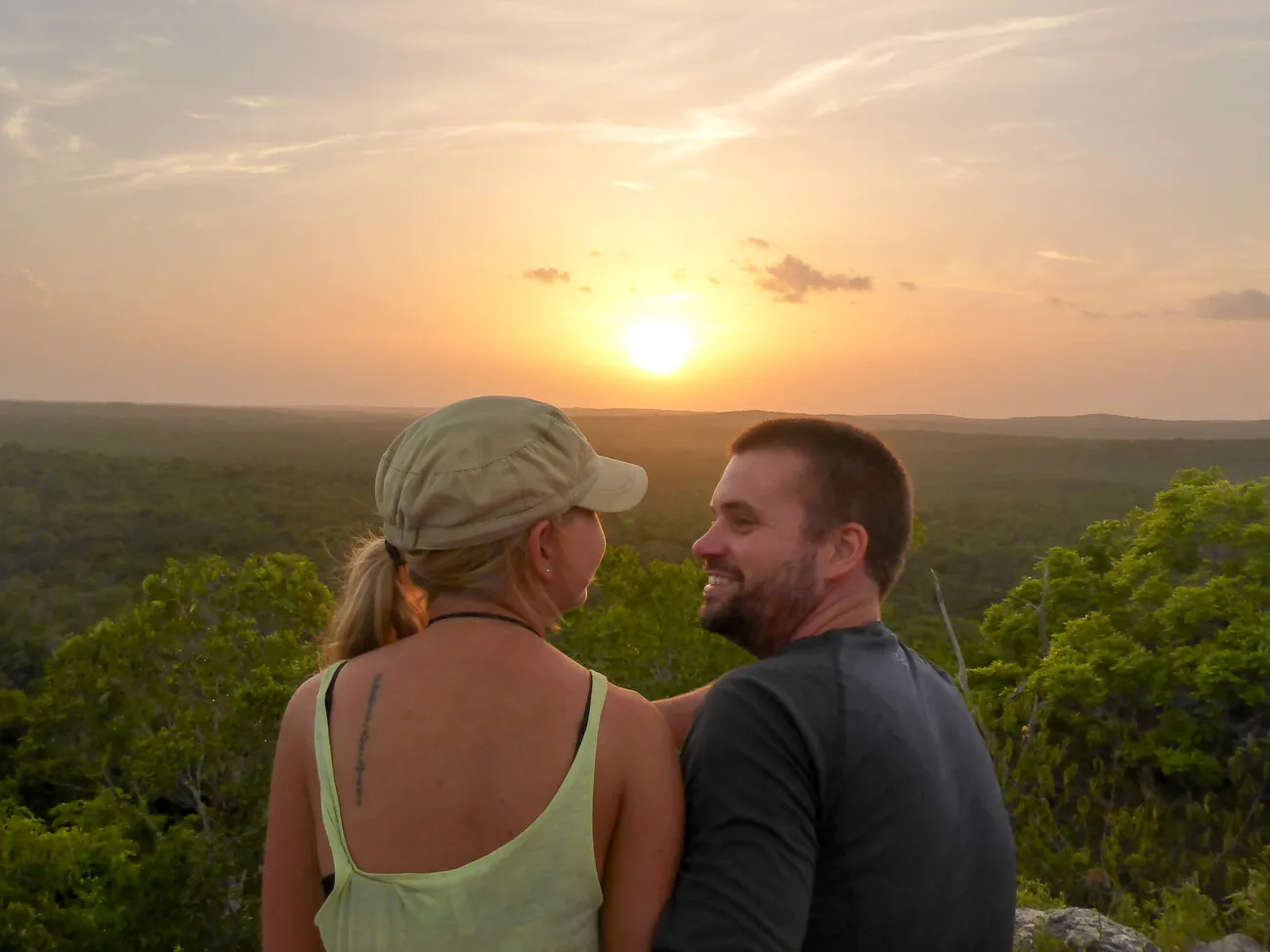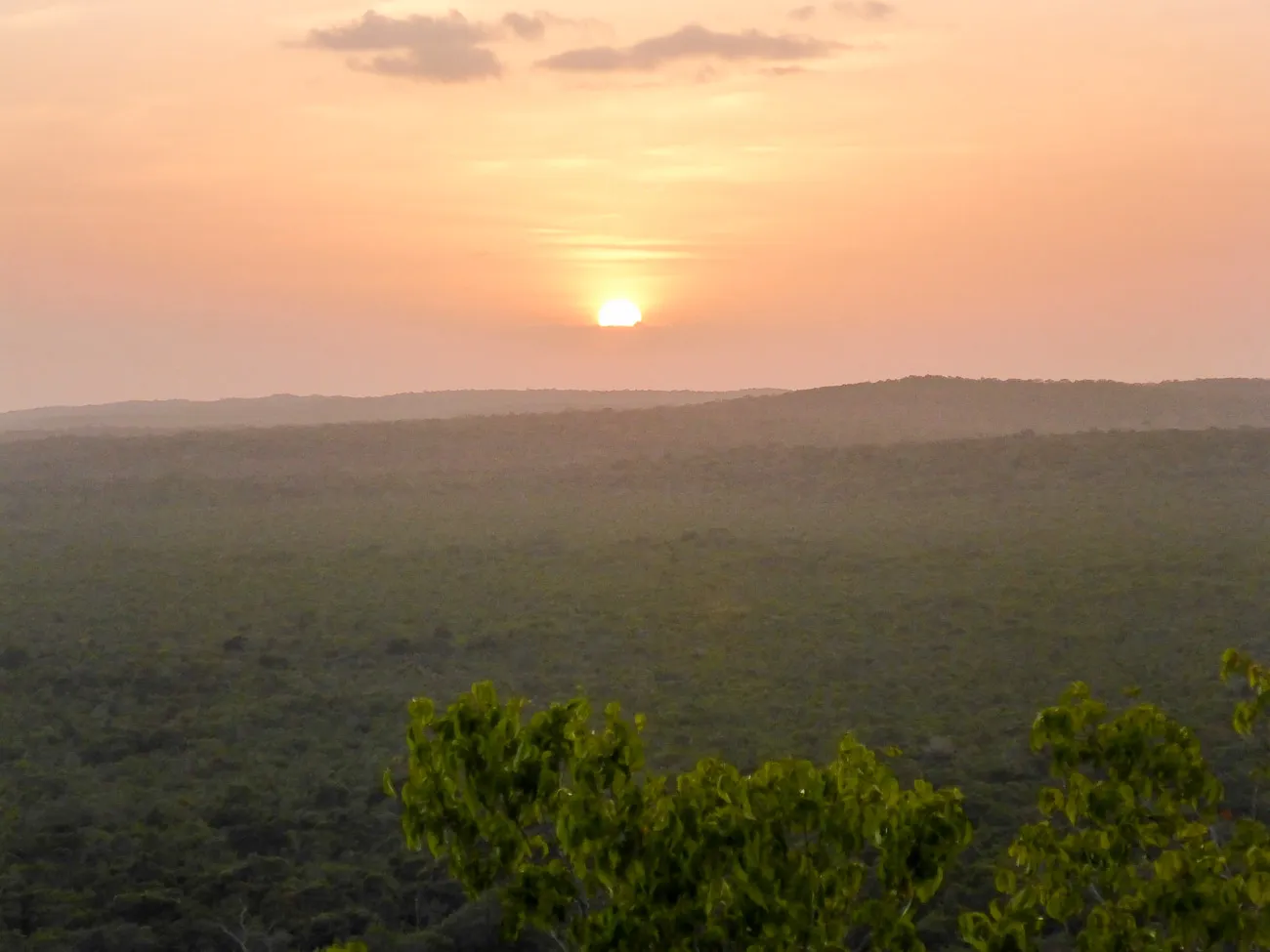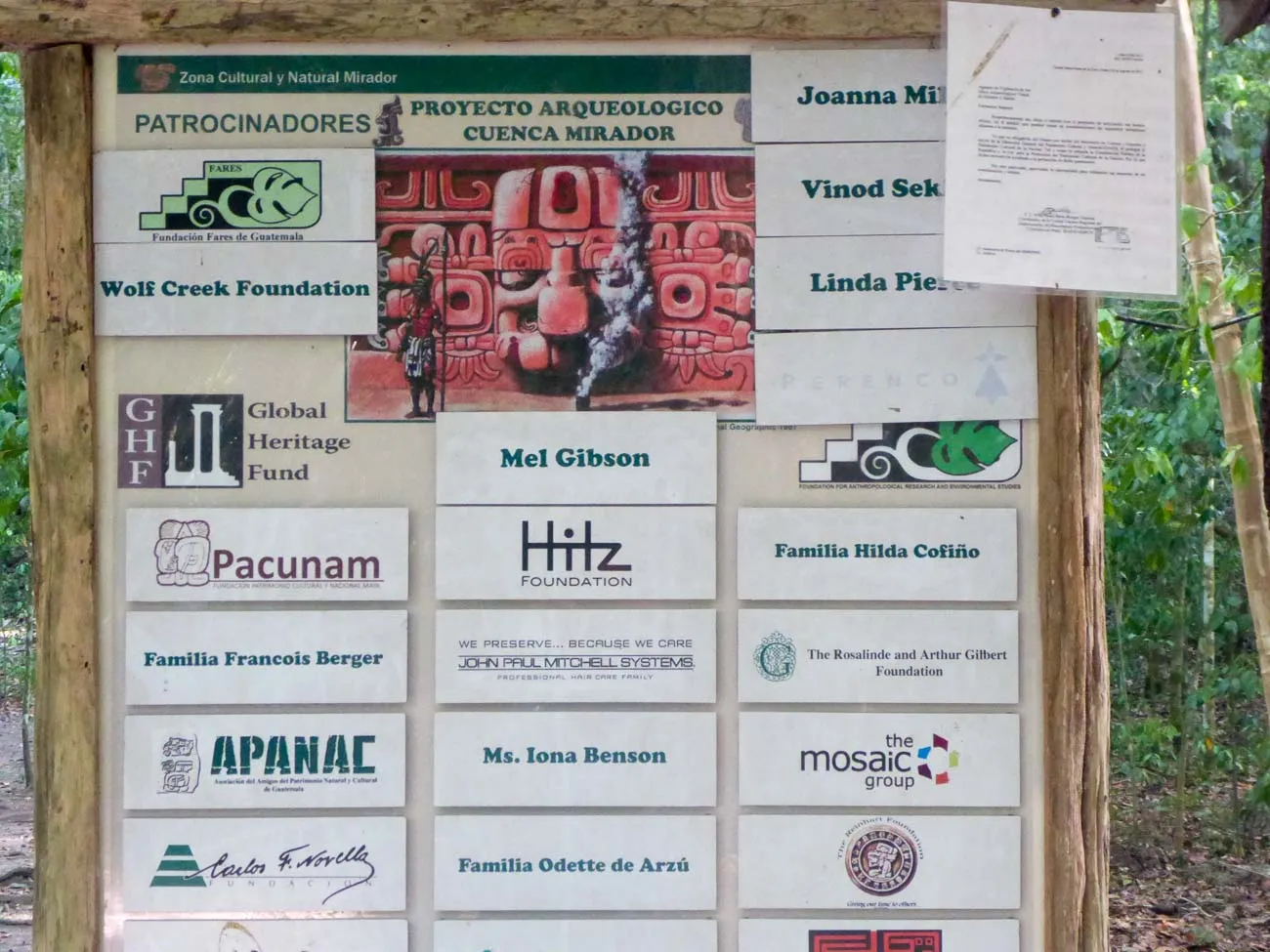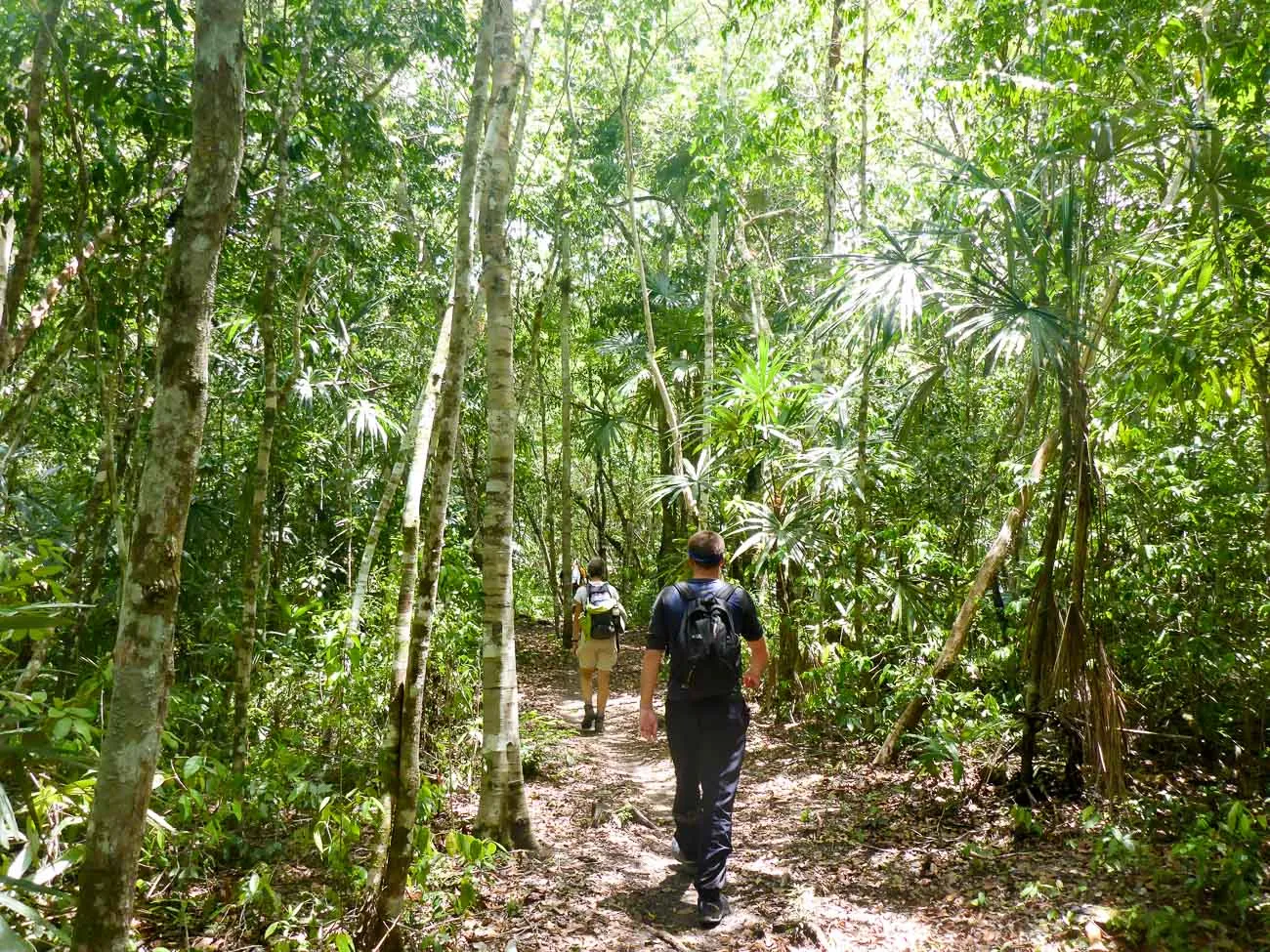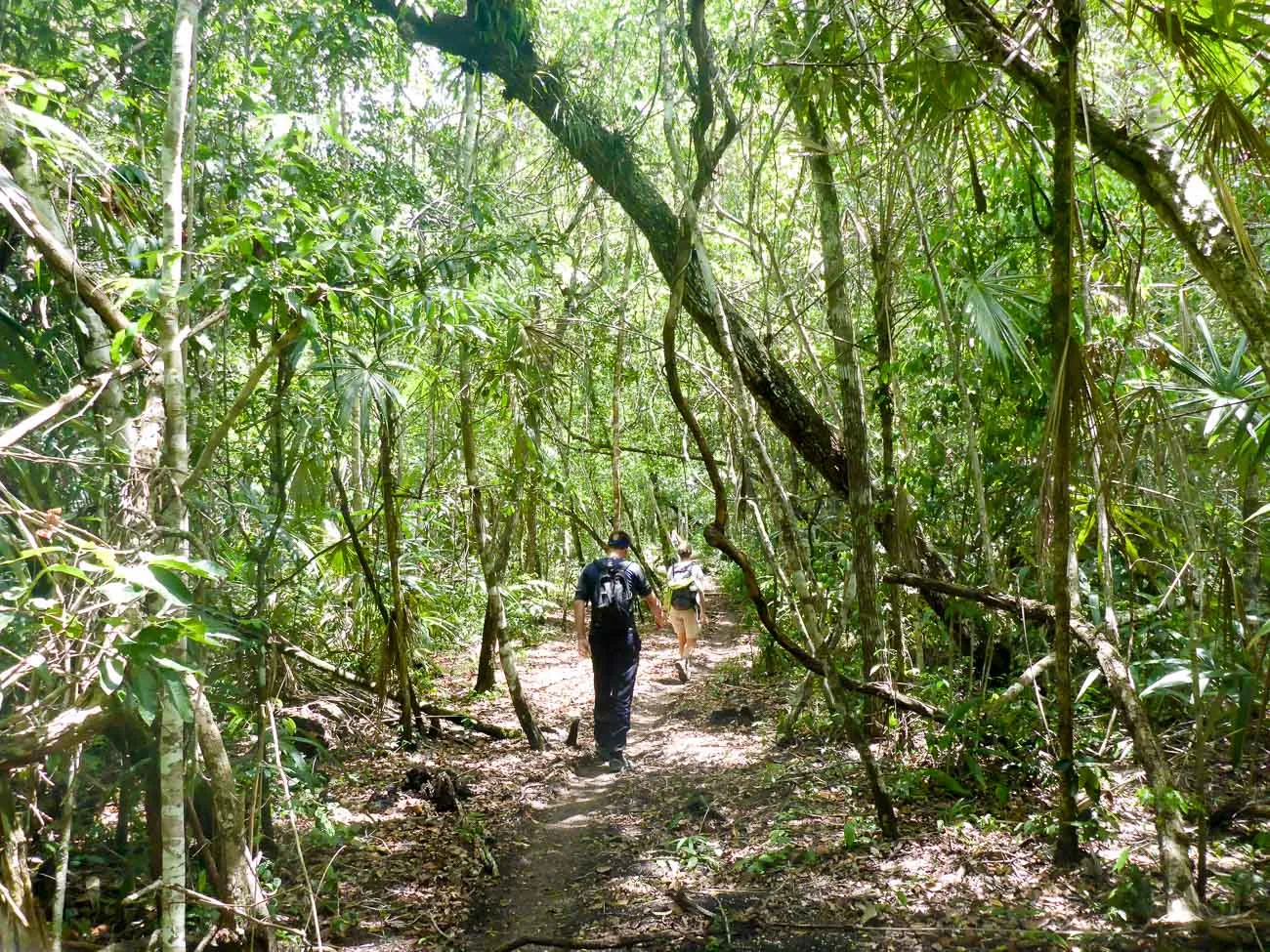Leanne Says:
We woke at sunrise after a surprisingly pleasant night’s sleep. Stepping out of the tent we saw spider monkeys climbing on the trees above us. Watching their amazing acrobatics was a great start to the day.
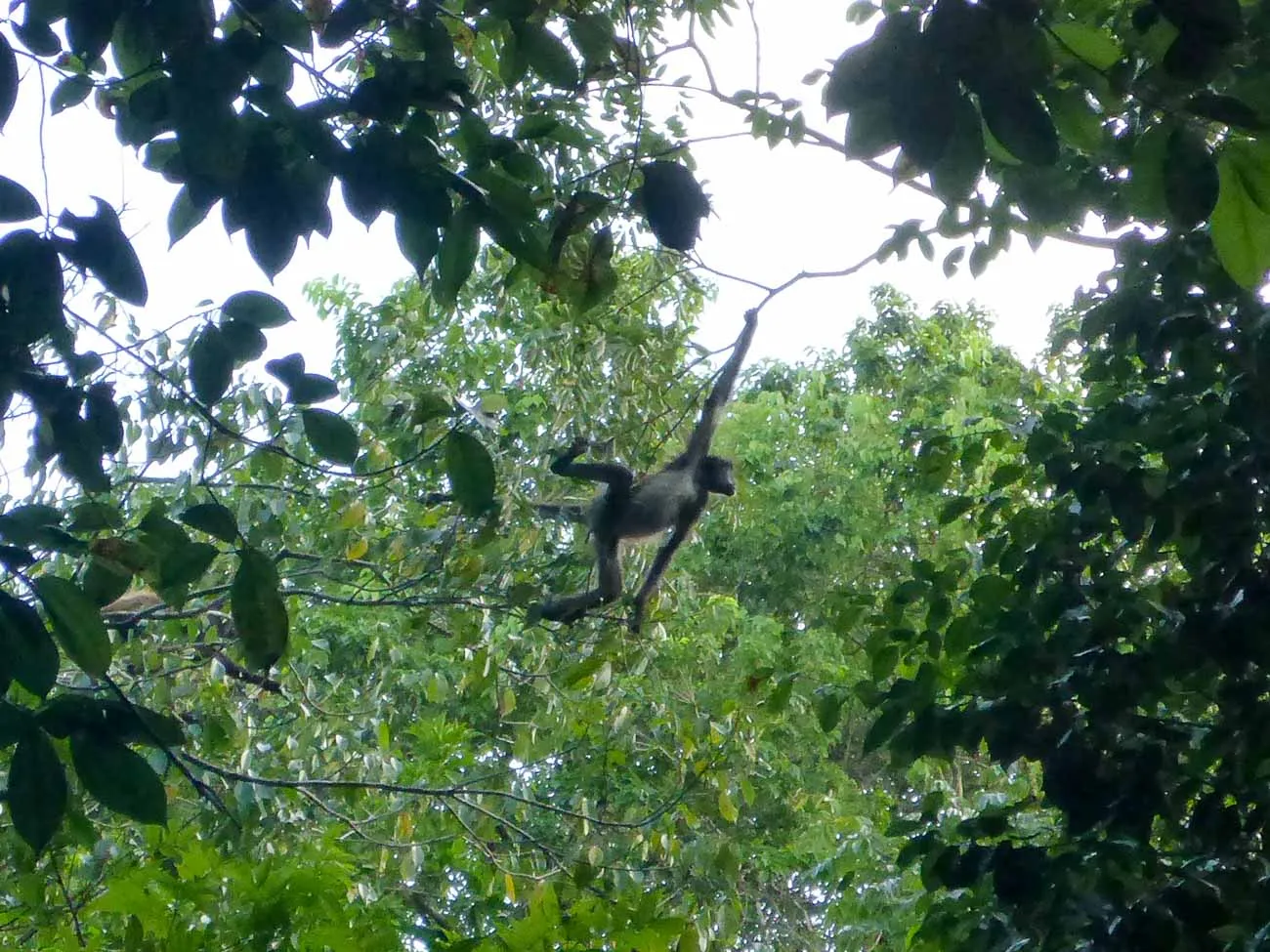
After breakfast we heard a few shouts from where they prepared the food. It turned out to be a scorpion wondering around the camp. I was becoming more and more aware that the jungle was teeming with wildlife, most of which could kill you.
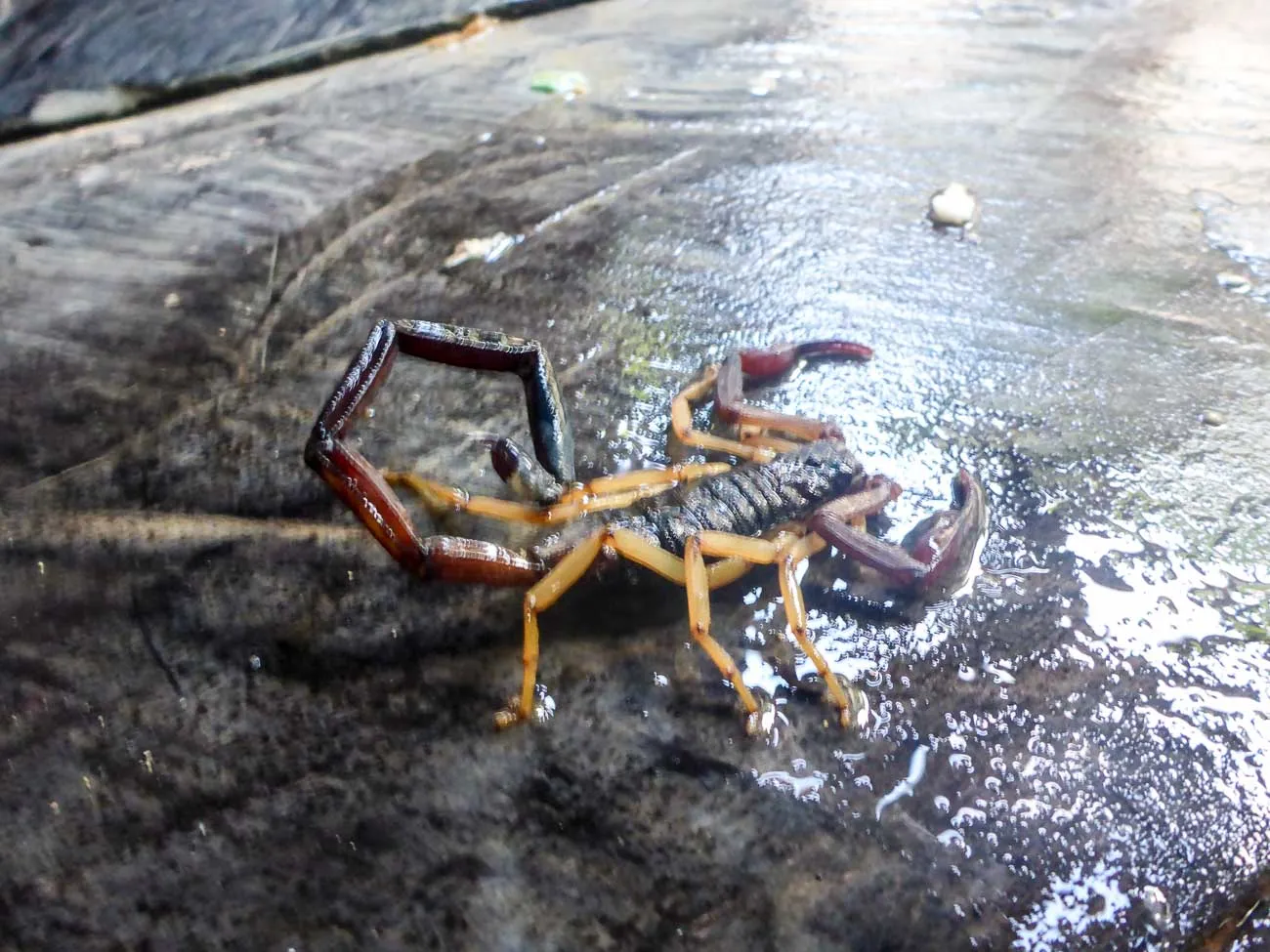
Day two’s trek was longer than the first. The jungle had become denser which meant that we were in the shade more. However a new challenge had presented itself in the form of blisters which were popping up all over my feet. My inadequate walking shoes and wet socks were causing serious problems.
After a hard days trek we made it to El Mirador. The camp was more rustic than the first but we were all happy to have made it that far.

In the afternoon I had to beg borrow and steal some plasters, pins and iodine to try and doctor my feet. We do own a first aid kit designed specifically for trekking but had failed to actually pack it on the trek. I was thankful that we didn’t have to do much walking the next day as we were to spend the day exploring the site.
At dusk we climbed to the top of another temple and watched a perfect sunset over the jungle.

Our tent for that evening was worse than the first night and I was becoming increasingly worried about a hole in the tent as we passed poisonous snakes and cockroaches on steroids.
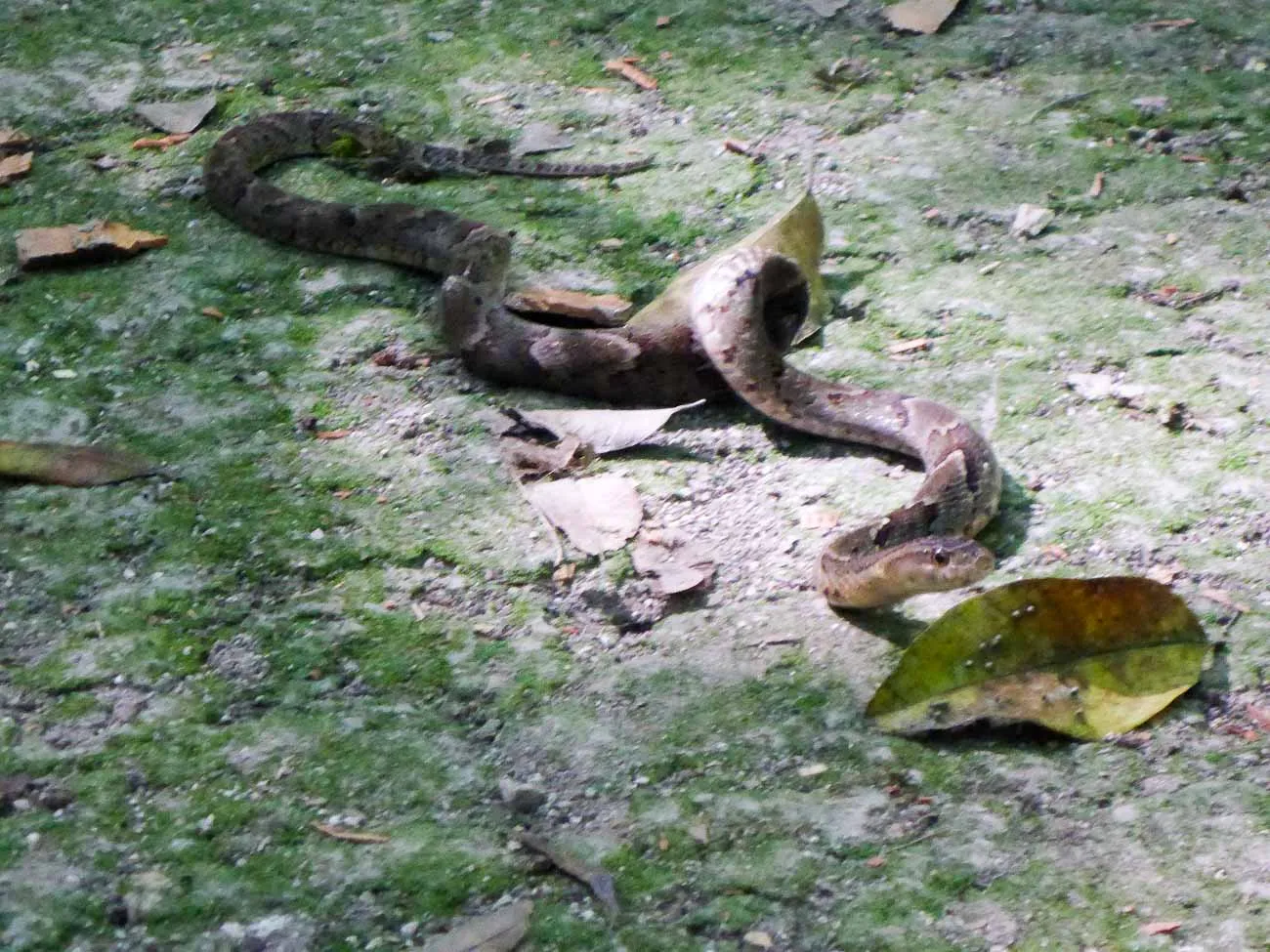
There were shrieks in the night from another camp as a girl claimed to have seen a scorpion in her tent. As I lay there on the hard floor of the tent, blistered feet, smelling worse than a sewer with deadly animals circling the tent I seriously questioned what we were doing.
Karl Says:
The day starts early, there’s monkeys in trees above our tent and there’s a commotion about a scorpion in the camp. Do I want to walk 35km through the jungle, well not really. I usually like walking but it’s just so hot.
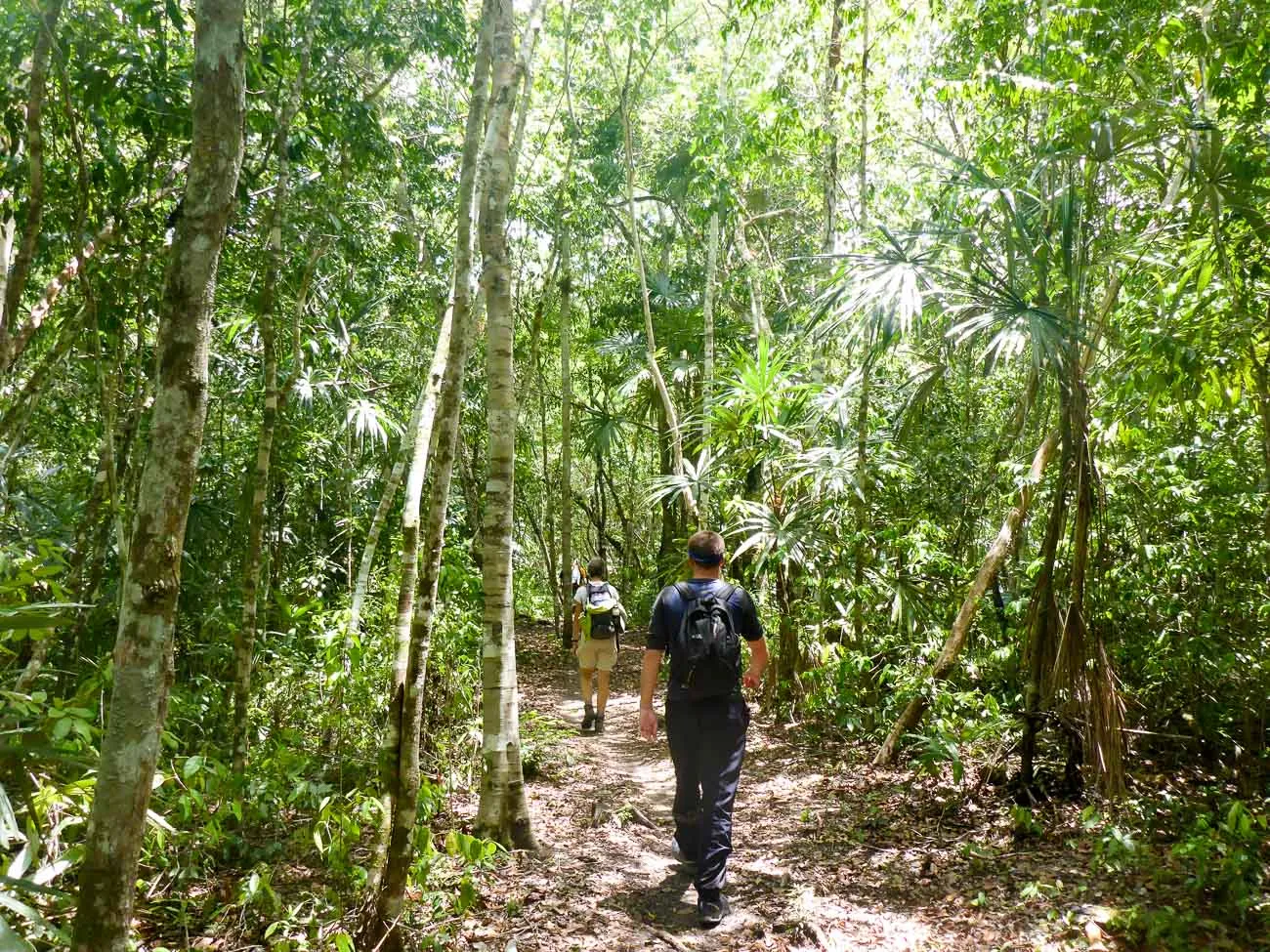
This day however is more interesting, the jungle is thicker and there’s wildlife all around. We pass an old gatehouse and several crumbling ruins. At one the guide goes inside, presumably a tomb and comes out with a pre-classic Mayan plate that would be more suited to a museum than a jungle.
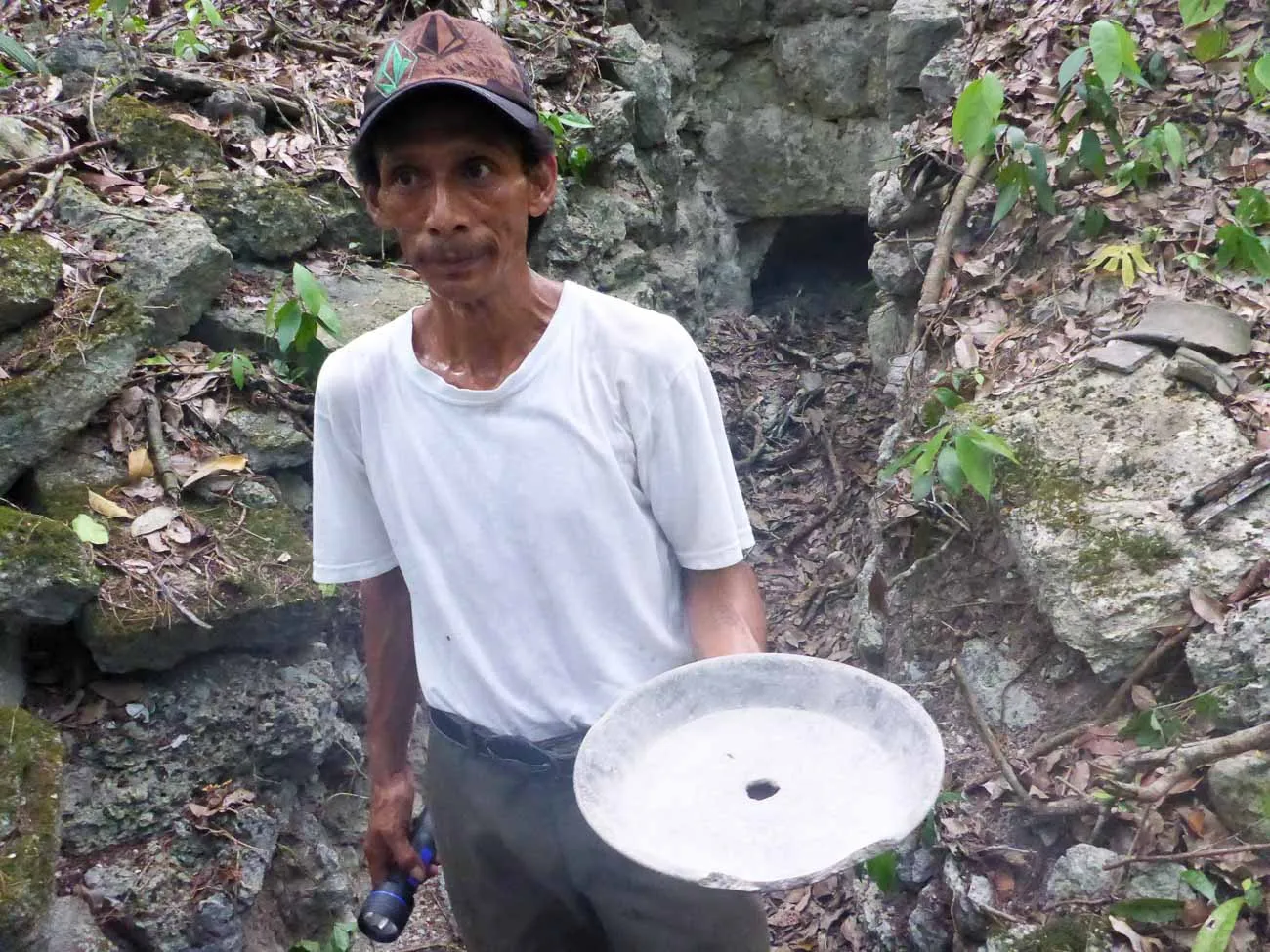
The path we are following is thousands of years old and follows the ancient Mayan road system which is why there are ruins dotted along the side. This road has also been used by drug smugglers on the way to Mexico and also by looters who search the ancient sites for artefacts to sell.
The wildlife here is better, I spot a poisonous green snake with a blue head, several frogs and lizards, wild turkey and other birds.

Along the way the guide stops at a tree with a black looking bark, almost as if it’s diseased. He says this tree is incredibly poisonous and never to touch it. He then recalls the story of a boy in the village who tryed to chop the same species of tree with a machete and died. His airways closed and he died of suffocation. Two minutes later he showed us the tree\bush that was the antidote, presumably the boy was unable to find the cure.
Hobbling like a penguin I arrive at El-Mirador, well it’s the sign to El-Mirador national park. I’m disappointed to learn that the camp is still another 30 minutes away.
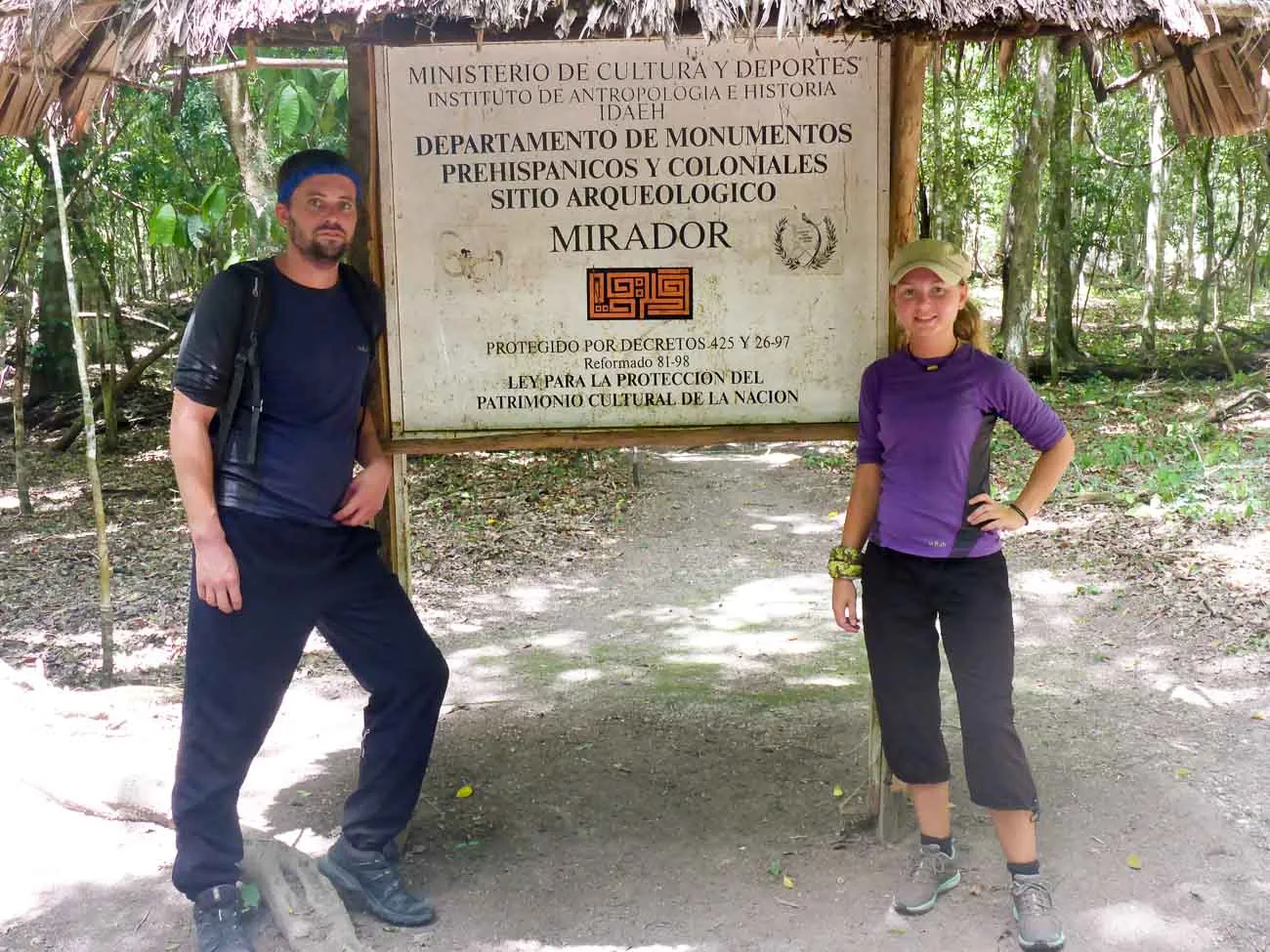
Behind the sign is the sight of El Muerte where two ancient tombs sit amongst the trees.
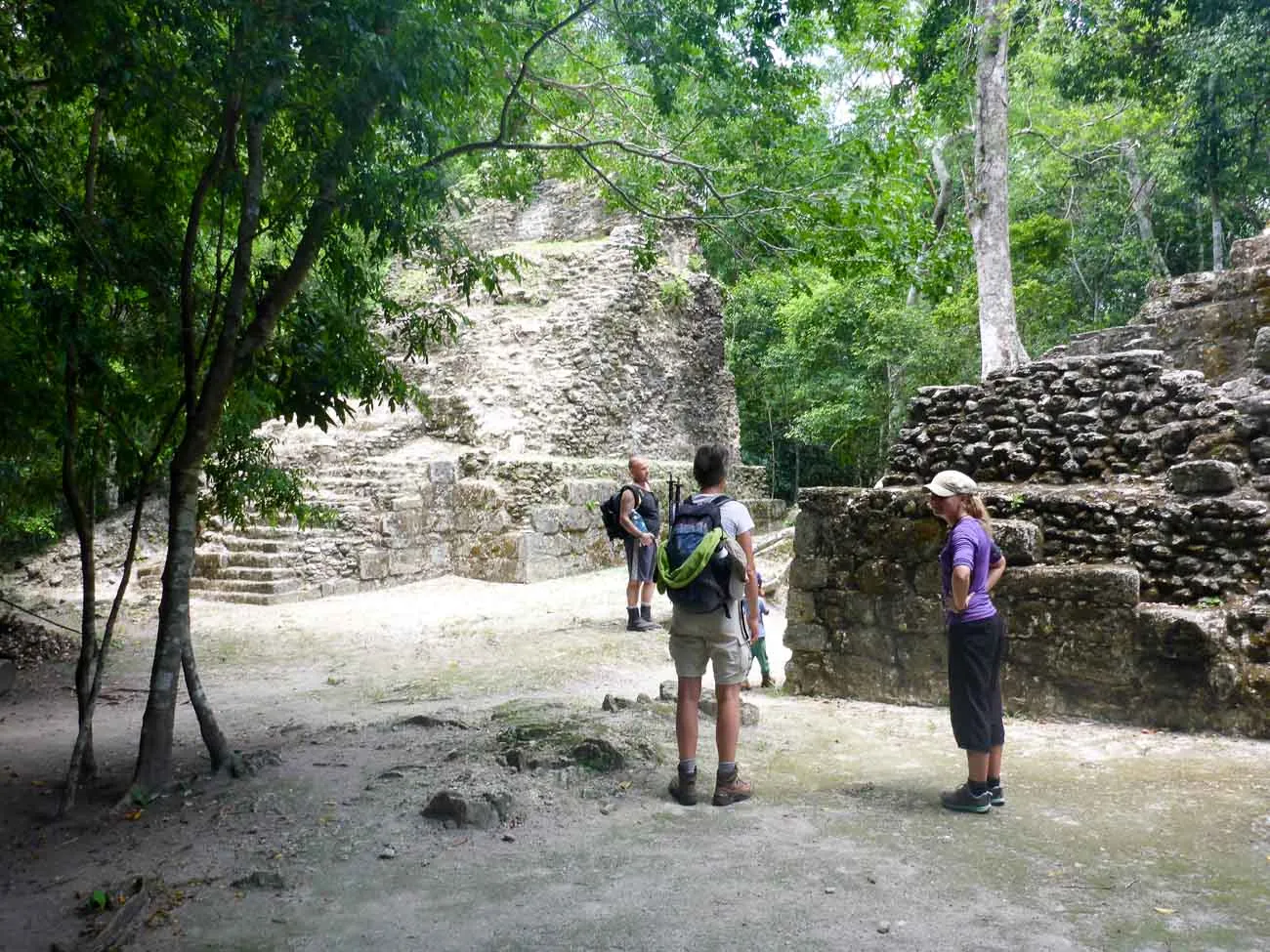
We crawl inside on hands and knees with a head lamp for light, around small tunnels barely big enough to squeeze through, only to be greeted by a load of bats hanging from the roof and flying past our heads.
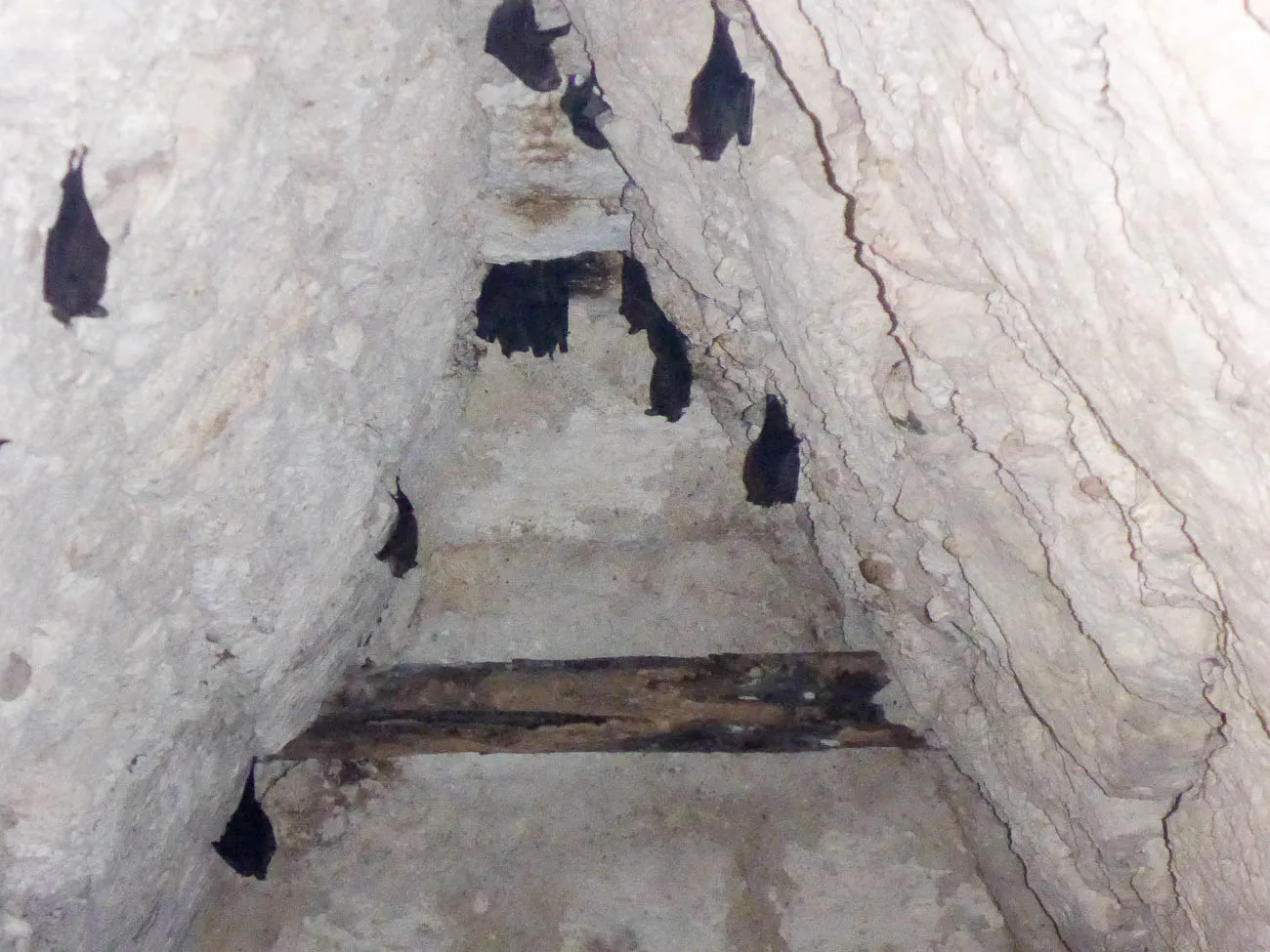
The evening is spent at the top of El-Tigre the tallest Mayan temple where we watch the sunset across the jungle canopy.
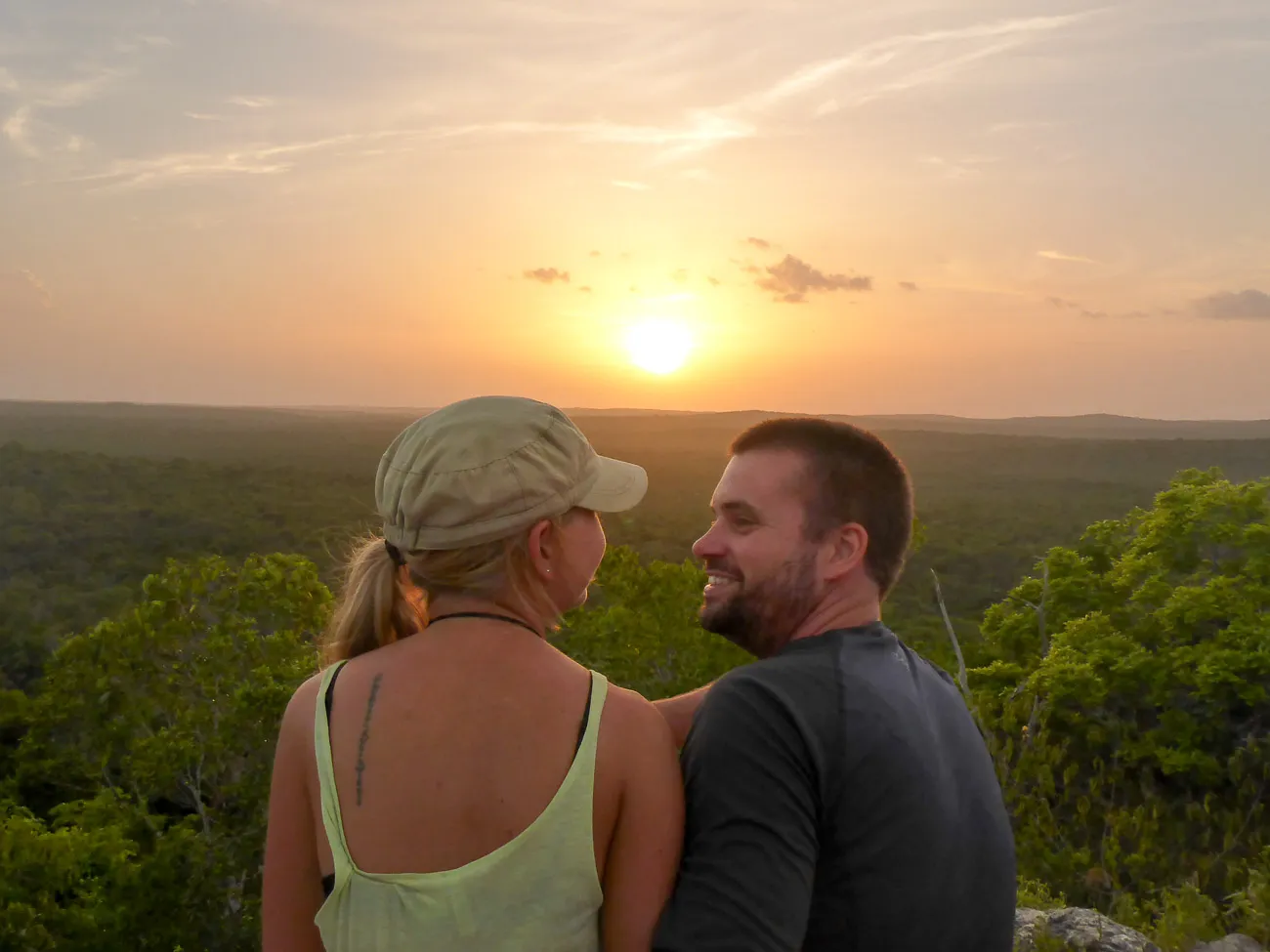
The camp for the night is uncomfortable, mainly because I’m lying on a concrete floor. The battered sponge mattress is a waste of time. Leanne seams more worried about insects. I go to sleep covered in sweat, without a shower and in the same clothes for two days.

